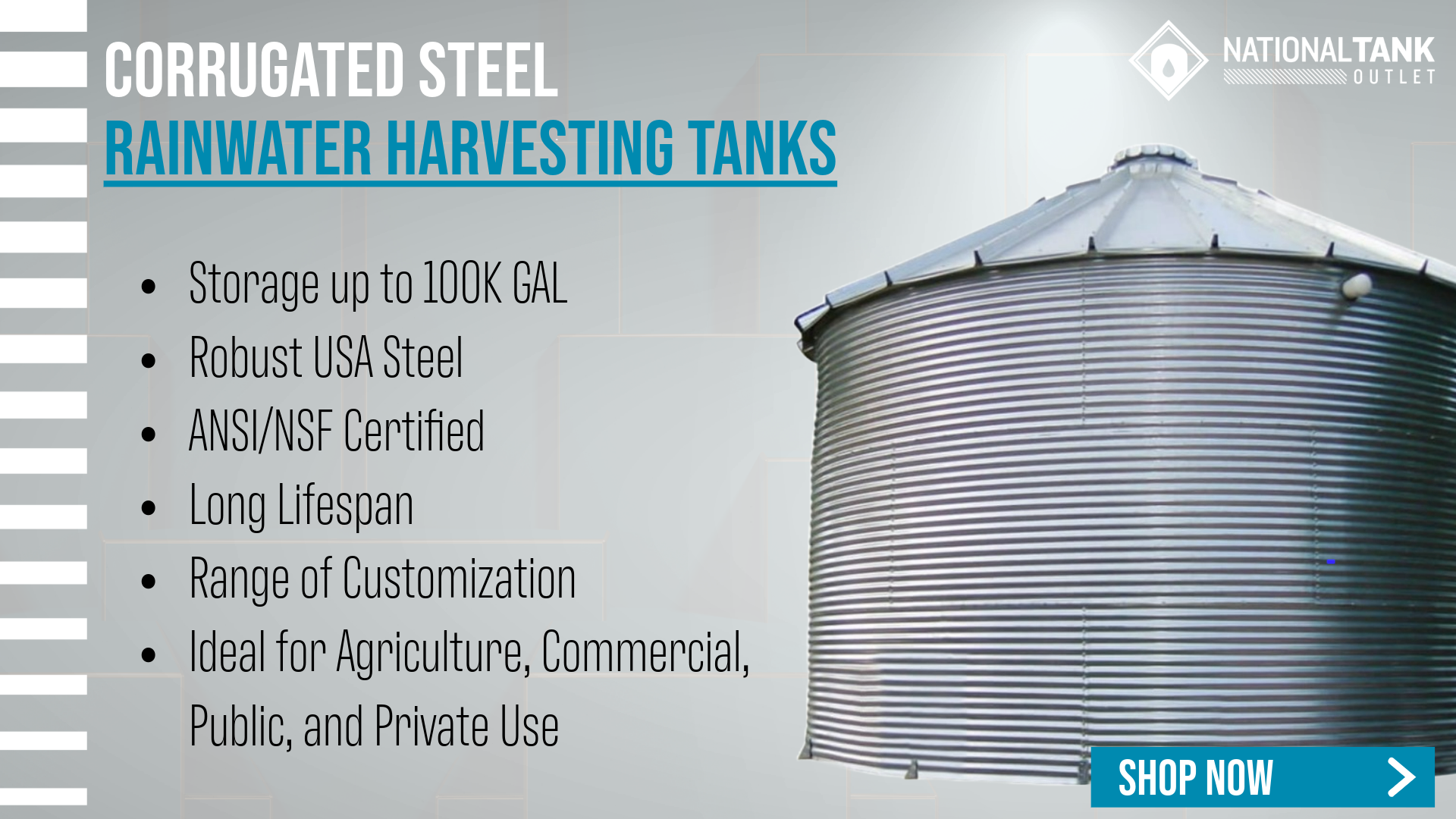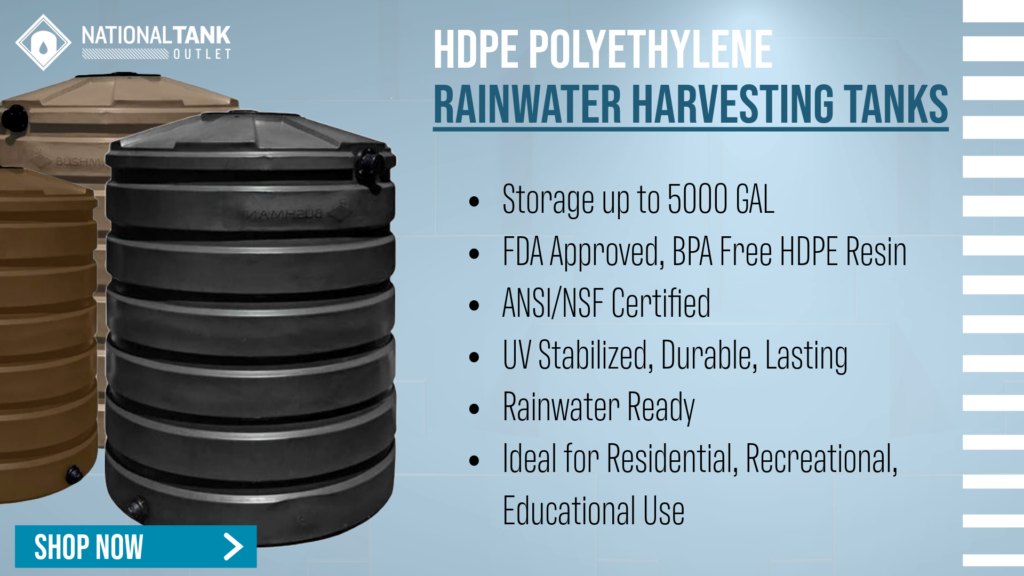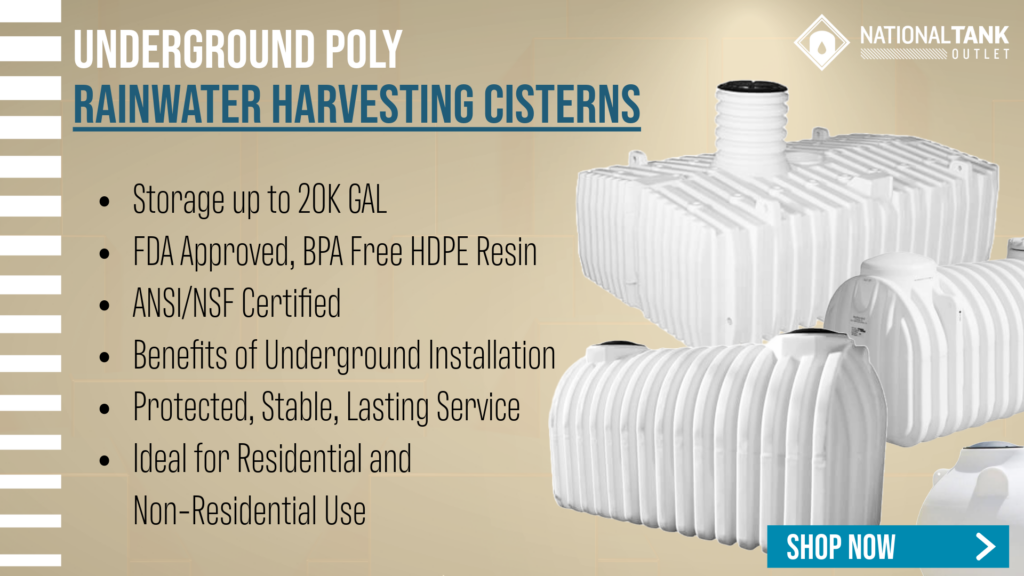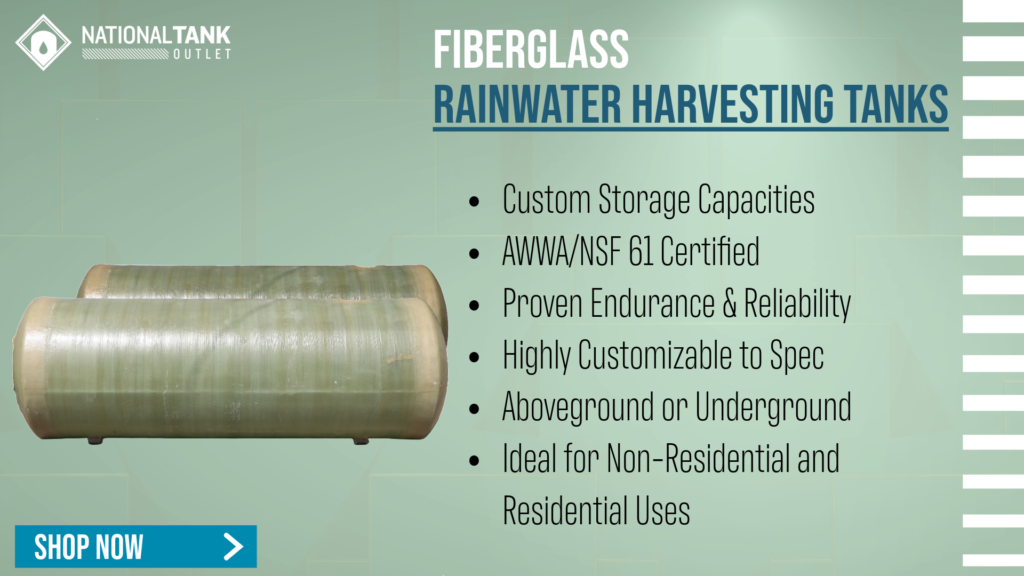
Concerning legal status, the practice of rainwater harvesting is currently legal in all 50 U.S. States. Although it may be legal to harvest rainwater, there still may be various regulations and requirements surrounding the activity that have to be followed depending on the state. Regulations, rules, or requirements for rainwater harvesting can vary on the specific end use for the collected rainwater, the U.S. State, and the sector of society the system will be installed in for use, such as at a personal residence or business.
For rainwater harvesting systems, example regulations can govern how many rainwater containers can be installed, the total volume storage capacity allowed for the containers, what the rainwater can be used for, how clean the water has to be even for outdoor uses, the size and discharge location of the container overflow plumbing, and whether installing an underground cistern is acceptable.
State Level Regulation
The practice of rainwater harvesting is not regulated on the federal level within the United States but is handled by each of the individual states for any laws, regulations, rights, and permits. And each state varies in its governing laws, geography, and water rights, which all contribute to the differences seen across the U.S. concerning rainwater harvesting. The same is true for any rainwater harvesting incentives, rebates, and tax credits, which are often further divided down to the level of individual cities, counties, or state districts.
Outdoor, Non-Potable Rainwater Uses
In general, the majority of U.S. states do not place any restrictions on harvesting rainwater when the water will be used for outdoor, non-potable applications by residential properties. This includes all water-requiring activities where the water will not be used for drinking or other activities where the water may be consumed. Examples of outdoor, non-potable uses for rainwater harvesting include irrigation of landscapes, watering gardens, filling of decorative and recreational water features, washing vehicles, and washing pets or animals.
Indoor, Potable Rainwater Uses
While it may not be explicitly illegal to use rainwater harvesting for potable applications – meaning you likely won’t be criminally punished if proven guilty of drinking water from a personal rainwater harvesting barrel or cistern – it simply is not recommended without the proper system to first filter and disinfect the water. The situation can be very different if the state does have specific rules, such as Colorado, or if the setup is for non-residential use.
Concerning the use of rainwater harvesting to supply indoor water and potable water fit for human consumption, most U.S. states have recommendations or standards in place on the design, setup, testing, and maintenance of a potable-grade rainwater harvesting system for use in either a home residence or a business. Setting up and installing a potable rainwater harvesting system for indoor uses without the proper permits and/or inspections can result in fines, redoing of work, and other problems. Some jurisdictions ban the practice of potable rainwater harvesting systems altogether due to what may be various concerns with health, backflow prevention, maintenance, and oversight.
State-by-State Quick Links
Below is a breakdown of rainwater harvesting laws, regulations, and rights by state for each of the 50 U.S. States. Use the following quick links to jump to the corresponding state information.
General Recommendations for All Rainwater Harvesting Systems, Regardless of U.S. State
The following are the top general recommendations on installation design and setup for all rainwater harvesting systems regardless of which U.S. State the setup will be used in.
- Use New, ANSI/NSF Containers: Rain barrels, tanks, and cisterns should be previously unused (i.e. brand new) and should be listed for use with potable water.
- Avoid Translucent Containers: Rain barrels and tanks should be opaque, painted, and/or appropriately colored to prevent sunlight infiltration and algae growth.
- Watertight: Rain barrels and cisterns should be watertight and all plumbing and equipment free of leaks.
- Secure: Rain barrels and cisterns should be kept securely covered to prevent accidental entry and/or drowning by animals and humans, especially children.
- Pest Prevention: All inlets and outlets should include a preventative screen or closure so as to not be directly accessible by animals or insects such as mosquitoes.
- Debris Prevention: The rain barrel or cistern water inflow should include an inlet screen to prevent debris washed from the roof from accumulating in the rainwater storage container.
- Overflow Relief: All rainwater containers should have an overflow discharge that is adequately sized to allow proper water flow and discharge when the container is full.
- Direct Overflow: Consider directing overflow water to an onsite water feature, a secondary tank, a rain garden, swale, basin, or directly to a storm drain.
- Tap Containers for Access: Rainwater harvesting containers should have a convenient, functional means of withdrawing water so the container does not need to be opened for water withdrawal.
- Install Correctly: Do not connect rainwater collection plumbing systems with the main, public water supply system of a building or structure without approval from the jurisdiction having authority nor without the proper permits, equipment, and/or installation by a licensed professional.
- Due Diligence for Potable Rainwater Systems: Contact local government or state department when planning to install a potable grade quality rainwater collection system and/or when planning on using rainwater for indoor non-potable applications.
Alabama Rainwater Harvesting Law
Rainwater harvesting is legally approved, supported, and encouraged in the State of Alabama. For residential property owners, rainwater harvesting is considered a private property right. For agriculture, commercial, and industrial properties, the design requirement of a rainwater harvesting system may depend on ownership, intended rainwater use, and the business location within a city or county.

For indoor rainwater use, Alabama generally recommends using the rainwater for non-potable applications only and requires the rainwater to be treated to the standard and point of potable grade quality even for non-potable uses.
In Alabama, rainwater harvesting is often referenced as part of a Low Impact Development (LID) technique and approach to stormwater control and best management practices.
Incentives
Some supportive incentives exist but mostly for public bodies such as municipalities and companies engaged in public water supply. Such support can be in the form of grant money from the Alabama Department of Environmental Management (ADEM) in the so-called Clean Water State Revolving Fund (CWSRF).
Alabama Rainwater Harvesting Information Resources
There are several educational and technical reference guides and brochures produced by the State, by universities, and by cities. Several have been developed and marketed toward homeowners, indicating the State of Alabama’s support of rainwater harvesting.
- Low Impact Development Handbook for the State of Alabama | ADEM
- A Homeowner’s Guide to Rainwater Harvesting | Alabama A&M and Auburn Universities
- Post Construction Storm Water Design Manual | City of Birmingham, AL
Alaska Rainwater Harvesting Law
There are no known regulations, laws, or protection rights against harvesting rainwater in the State of Alaska.

Rainwater harvesting is recommended by researchers as a potential means to assist water supply issues in rural Alaskan communities that are due to their remote locations and lack of available public utilities. In this regard, rainwater catchment has been recommended to Alaska State Legislature by the Alaskan Office of Environmental Health and Engineering as an alternative water supply source. The recommendation is to use rainwater harvesting as a centralized water system for indoor, potable and non-potable applications to serve rural Alaskan residents.
Harvesting Rainwater in Alaska Feasibility
The feasibility of rainwater harvesting in Alaska could perhaps be questionable. The viability of the practice may also be significantly limited given the environmental extremes experienced within Alaska State. Harvesting rainwater in Alaska would most likely be reserved for the summer months and more encouraged in the southern regions. Unless the capture of snowmelt would be considered a practice of rainwater harvesting, as it sometimes is. It is perhaps for these reasons there are no known or discoverable rainwater harvesting laws, regulations, codes, and/or rights for the State of Alaska.
Arizona Rainwater Harvesting Law
Rainwater harvesting is legal, highly supported, and encouraged in the State of Arizona. In Arizona, residential homeowners have the legal right to capture and collect the rainwater that falls on their roofs and store the precipitation in a barrel or cistern for later use.
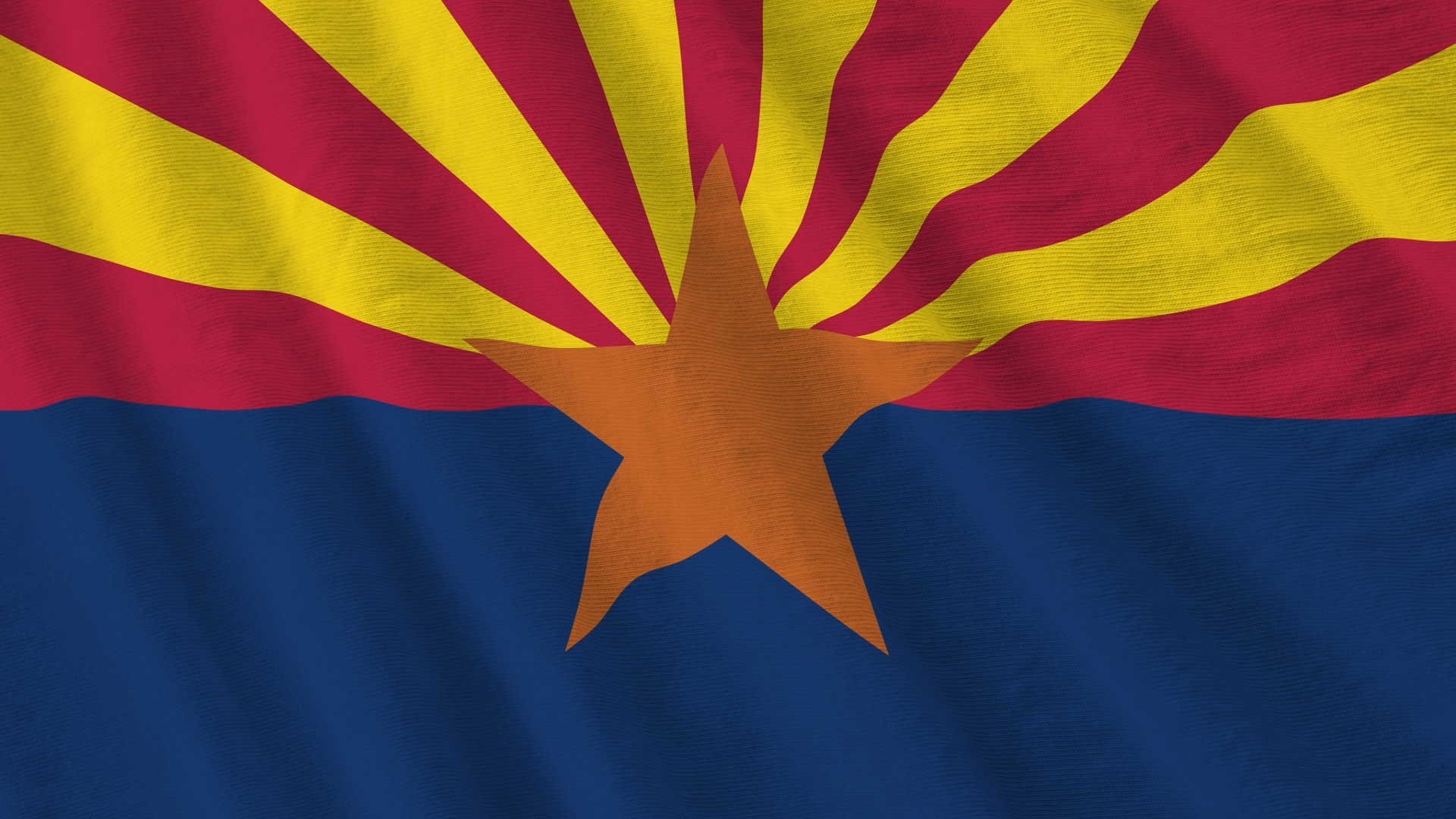
The captured rainwater must be used on the property it is collected and is recommended for outdoor irrigation use for homeowners. However, according to the University of Arizona, the Arizona State government does not have any laws in place regulating private water systems, which include rainwater harvesting. Use of rainwater for indoor, potable and non-potable use such as water for flushing toilets, is acceptable in Arizona. Indoor use of rainwater must meet filtration and disinfection requirements prior to being acceptable for use. Installation, system equipment, and maintenance requirements for an indoor rainwater usage system must meet local permit and building codes.
Arizona is a dry state in the western United States with only around 13 inches of rain annually on average. Arizona State and City governments encourage the practice of rainwater harvesting as a water and energy conservation effort in this fairly dry state with infrequent rainfall. The interest and use of rainwater harvesting in Arizona began largely to help contribute to the needs of irrigation and therefore help maintain the state’s drinking water supplies.
Arizona Rainwater Harvesting Legal Codes
In 2010, Arizona State and the City of Tucson became the first location in the United States to require new commercial buildings to use rainwater and rainwater harvesting systems to supply at least 50% of the water that will be used for outdoor irrigation and landscaping (US EPA).
In 2012, the Arizona State Legislature signed into enactment House Bill 2830. Arizona Legislature HB 2830 put into legal code official town and city support of rainwater harvesting as an approved energy and water saving measure. Arizona House Bill 2830 also allows a city or town to establish an energy and water savings account with funds for use by that town or city in the implementation of energy or water cost saving measures, which includes rainwater harvesting systems.
In 2010, Arizona HB 2778 of the 49th Legislature, the Arizona Revised Statutes was amended to include rainwater harvesting systems and prohibit a housing association from restricting the installation and use of a rainwater harvesting system that is intended to act as a water saving device.
Arizona RWH Grants
In 2022, Arizona HB 2619 established the rainwater harvesting grant and funding program with guidelines for program requirements. The program appropriates $1,000,000 from the state General Fund to the Arizona Department of Water Resources for use as funds for the rainwater harvesting program.
The new Arizona rainwater harvesting grant program creates two levels of grants:
- Level 1 Grants: Provides reimbursement up to 50% or $500 maximum for installation of a simple and passive rainwater harvesting system.
- Level 2 Grants: Provides reimbursement based on the capacity of the cistern up to $2000 maximum for installation of a more complex and active rainwater harvesting system.
Arizona RWH Examples
An excellent example of rainwater harvesting undertaken by the State of Arizona in conservation and securing Arizona’s water future can be found in the Upper Verde River Watershed Protection Coalition’s Rainwater Harvesting for Aquifer Recharge as part of the City of Prescott, AZ Active Management Area.
The University of Arizona has published an article “Choosing Large Scale Rainwater Harvesting for Potable Supply” that provides great insight into rainwater harvesting in Arizona State as well as examples of systems being used for whole-home supply.
Additional Arizona Rainwater Harvesting Resources
- Harvest Rain | University of Arizona Water Wise Program
- The Layperson’s Guide to Arizona Water | UA Water Resources Research Center
- Basic Components of a Rainwater Harvesting System | UA Cooperative Extension
The State of Arizona was #3 on our list of Top 5 States for Rainwater Harvesting with Government Incentives.
Arkansas Rainwater Harvesting Law
In the State of Arkansas, rainwater harvesting is a legal and supported practice for homeowners, businesses, and agriculture. Information and details for Arkansas indicate support of rainwater collection for non-potable applications, both outdoors and indoors. For potable uses, Arkansas Plumbing Code section 602.1 mentions cisterns as an approved individual water supply but must meet the quality requirements for drinking water by the local jurisdiction having authority.
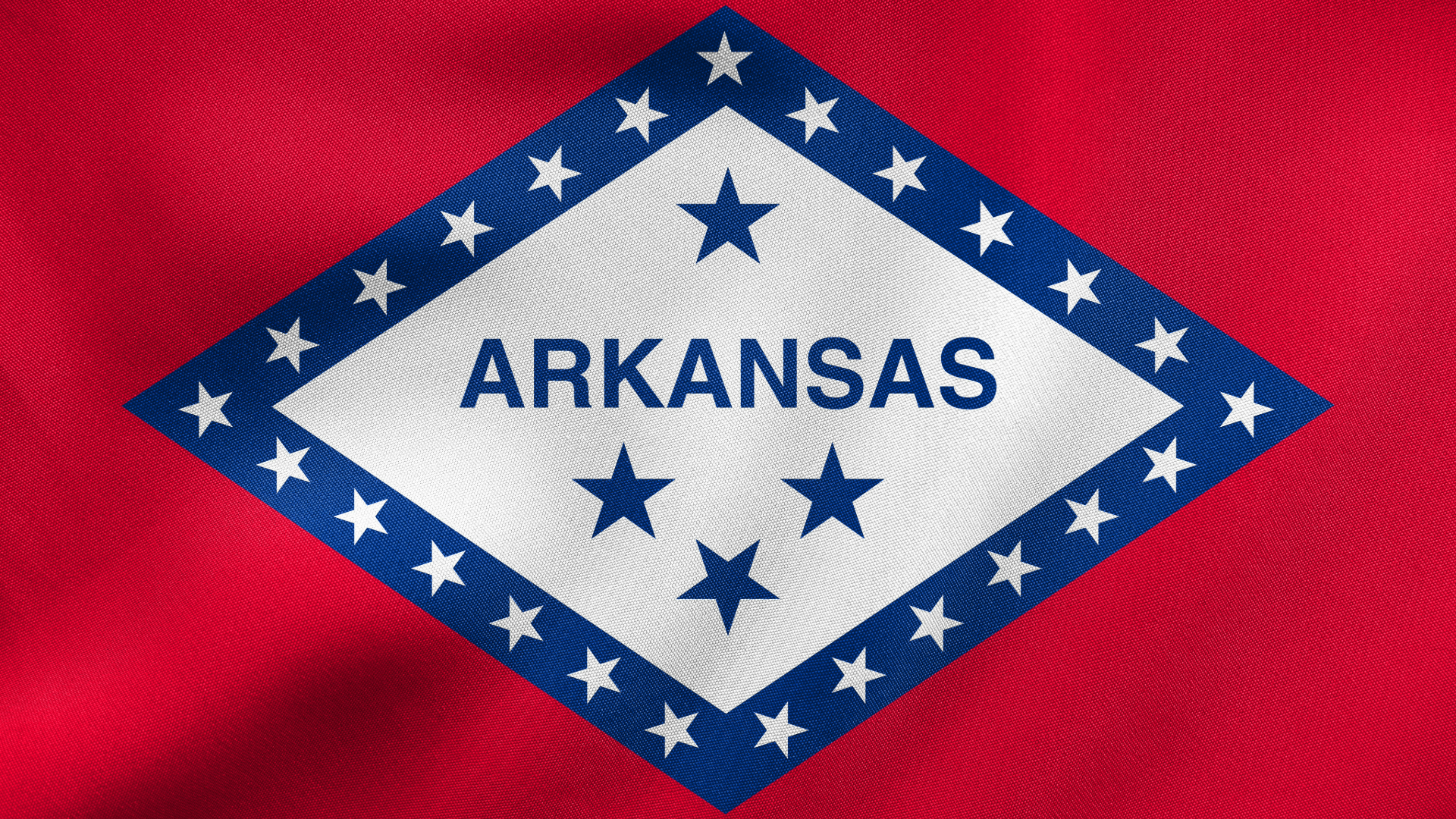
According to the Arkansas Department of Health, Protective Health Codes, there are no regulations in place that affect or inhibit the use of rain barrels or cisterns that will be used outdoors to water lawns and gardens, provided the system is not connected to a potable water source.
Arkansas Rainwater Harvesting Legal Codes
The Arkansas State Legislature maintains regulations and requirements for a rainwater harvesting system that will be used in indoor non-potable applications that will be connected to the building’s plumbing system and fixtures. The 2020 Arkansas Code Title 17 Chapter 38 Subchapter 201 (AR Code § 17-38-201 (2020)) approves the use of such non-potable rainwater harvesting systems if they meet the following guidelines:
- The system is designed by a professional engineer;
- The system maintains effective cross-connection safeguards between the rain system and potable public water supply, and;
- The system is in compliance with current Arkansas Plumbing Code requirements.
These requirements will most often require a licensed plumber or a professional contractor to perform the installation of non-potable indoor rainwater catchment systems in the State of Arkansas.
However, the 2020 AR Code pertains exclusively to rainwater harvesting systems intended for indoor connections with indoor non-potable rainwater use. The AR Code does not apply to simple rain barrel or cistern catchment systems that will be used for drip or subsurface irrigation of outdoor plants, gardens, and lawns.
How Arkansas Plumbing Code Relates
According to the Arkansas Plumber’s Law in 17-38-103 Scope of state plumbing code: “The provisions [of the state plumbing code] shall apply to all types of buildings, private or public, rural or urban, including buildings owned by the state or any political subdivision of the state.”
Therefore, according to AR Code 17-38-201 and the Arkansas Plumber’s Law, all non-potable rainwater catchment systems that will be used at indoor plumbing fixtures at both residential and non-residential properties in the State of Arkansas must be designed by a professional engineer and installed so as to be in compliance with AR Plumbing Code.
Concerning the Arkansas Plumbing Code, the 2006 Arkansas Plumbing Code received a major change in 2018 to include a chapter on non-potable water systems, which includes rainwater harvesting systems. The update includes definitions and standards for rainwater catchment and equipment. For more info, see Chapter 13 of the Arkansas State Legislature and Plumbing Code as it relates to rainwater harvesting and systems.
The University of Arkansas Division of Agriculture recommends the use of rain barrels and rainwater harvesting methods for residents and personal home and property owners.
California Rainwater Harvesting Law
Rainwater harvesting is legally approved, supported, and encouraged in the State of California. The California Rainwater Capture Act of 2012 was a wide-covering State Bill that laid the groundwork for the legal practice and use of rain barrels and rain catchment systems.
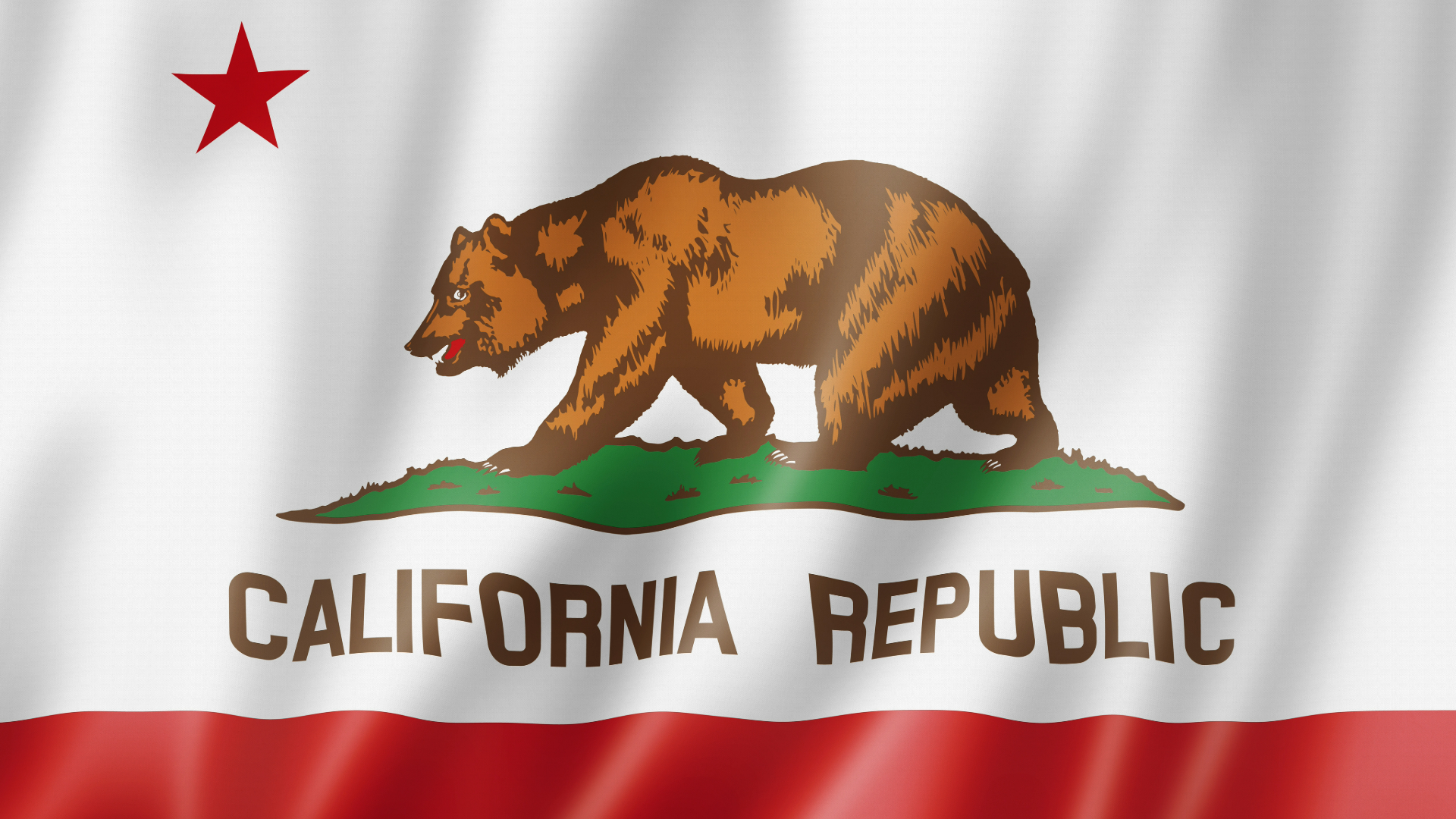
CA Water Board, Building Code, and Rainwater Harvesting Rules
According to the California State Water Board operating under the California Department of Environmental Management and according to Water Code Section 10574, no water permit is required to collect and store rainwater as long as the water is captured from rooftops, is used for outdoor, non-potable uses, and the rainwater is kept in a rain barrel or cistern that is less than 360 gallons in volume.
This is further defined in the California State Building Code, which says:
- A permit is not required for exterior rainwater catchment systems with cisterns up to 5000 gallons when used only for outdoor non-spray irrigation, that are installed directly on grade, and the system does not require electrical power or makeup water supply.
- A permit is not required for exterior rainwater catchment systems with cisterns up to 360 gallons when used for spray irrigation.
Regulations and rules from California may vary based on the size and intended use of the rainwater harvesting system. Home-based outdoor use of a rain barrel and cistern collecting rainwater from a roof, in most cases will not require any building or plumbing permits. For any other use, such as business, agriculture, industrial, in-home non-potable, potable, etc., or uses with containers larger than 360 gallons, a permit, inspection, and/or professional installation will likely be required and approved by the city or county jurisdiction. The best method would be to contact the local governance board to inquire.
For more information, see California Assembly Bill No. 1750 which contains the Rainwater Capture Act of 2012. Also, amended AB 1750.
For more information, see Part 5 of the 2022 California Building Code and what the code says on rainwater catchment systems. According to the California Building Code, the State maintains standards for both non-potable and potable type rainwater systems. Non-potable rainwater catchment systems are covered in Chapter 16 and potable rainwater systems in Appendix K.
The State of California was #2 on our list of Top 5 States for Rainwater Harvesting with Government Incentives (internal link).
Colorado Rainwater Harvesting Law
Rainwater harvesting is legal for practice in the State of Colorado with restrictions. Colorado State Revised Statutes Title 37 “Water and Irrigation” restricts rainwater catchment systems for select property types and regulates the total rainfall volume amount that is legal for on-property collection and use. Residential home and property owners can use up to two rain containers for a total of 110 gallons to collect rainwater in Colorado.
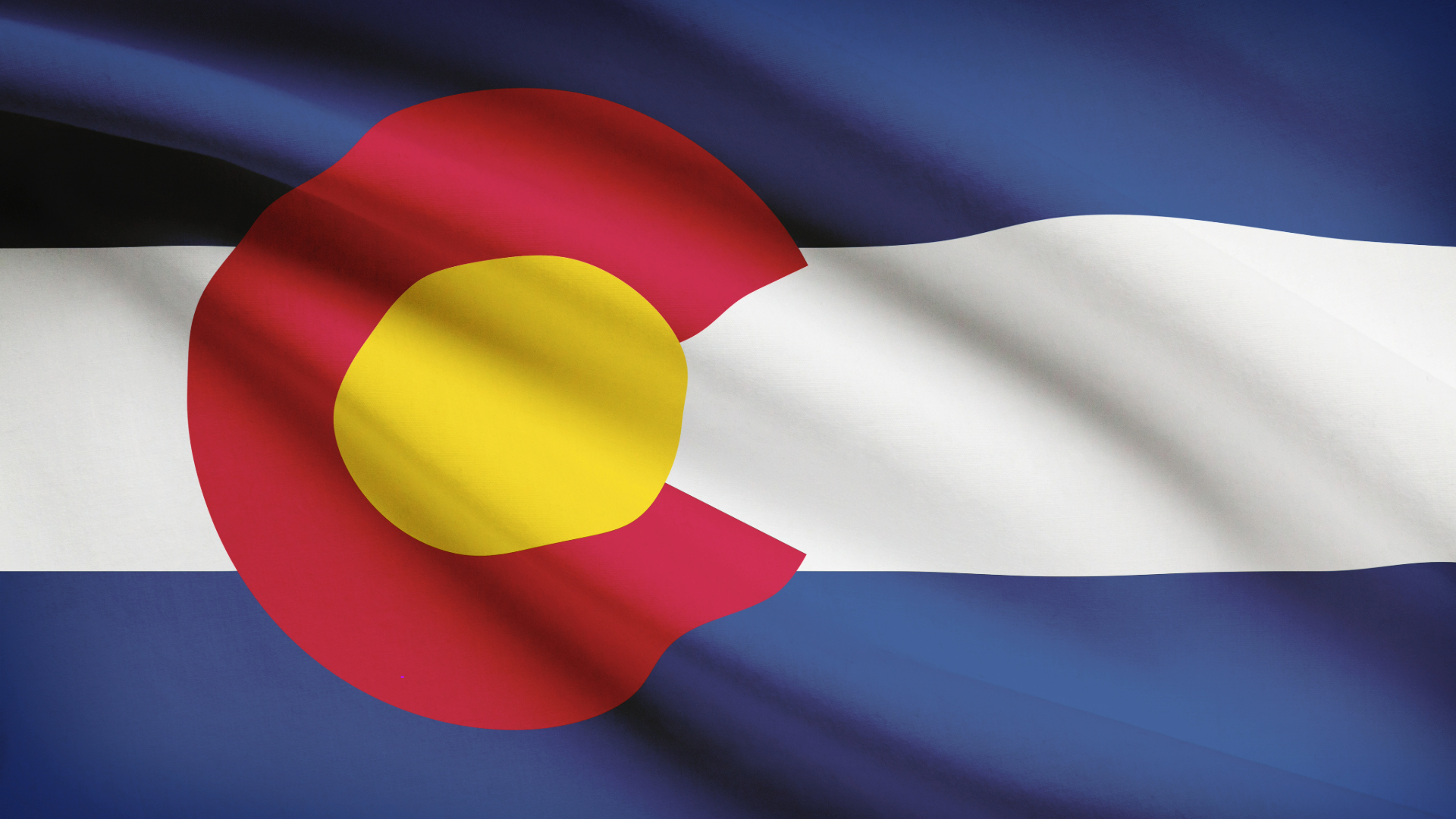
Past and Current Legality of Rainwater Harvesting in Colorado
The State of Colorado previously restricted rainwater harvesting as entirely illegal due to prior appropriation laws and water rights. On August 10, 2016, the Colorado legislature and the General Assembly changed the State Statute Title 37 with House Bill 16-1005 to allow the collection of rainfall in up to two containers and up to a total of 110 gallons of rainwater.
The legality of rainwater harvesting in Colorado only applies to residential applications and structures, with some regulations on the type of residential structure acceptable for use with rain capture systems.
Current Colorado State regulations for rainwater harvesting as approved and enacted in General Assembly HB 16-1005 are as follows:
- No more than two rain barrels with a combined storage capacity of one hundred ten gallons or less are utilized;
- Precipitation is collected from the rooftop of a building that is used primarily as a single-family residence or a multi-family residence with four or fewer units;
- The collected precipitation is used for outdoor purposes including irrigation of lawns and gardens;
- The collected precipitation is used on the residential property on which the precipitation is collected; and,
- A person shall not use precipitation collected under this article for drinking water or indoor household purposes.
The Colorado Division of Water Resources, Office of the State Engineer, has more information on these regulations and performing rainwater harvesting in Colorado.
Considerations for Harvesting Rainwater in Colorado
The cost of public water in Colorado will vary by municipality, company, and the region where the water is sourced and provided. The price of public water, (water rates), is projected to increase due to continued population growth, increased water demands, and an aging infrastructure incapable of meeting the demand that will require upgrading to increase water production capabilities.
The United States Geological Survey (USGS) records and reports annual water use data for Colorado, which has steadily increased since recording began in 1985.
Due to the arid nature of Colorado State, the state’s growing population, climate change, and drought concerns, conserving water and rainwater harvesting are topics that deserve extra attention in Colorado. For more information on water conservation in Colorado State, see the EPA’s “Saving Water in Colorado” brochure, the EPA’s WaterSense website, Colorado WaterWise, and also consider what the City of Boulder, CO has to say on water conservation.
Special Note
As a special note, concerning other online resources that may say rainwater harvesting is illegal in Colorado State, we recommend double-checking the publish date for the information and whether the information pertains to residential, personal, outdoor home use. Any online article on Colorado rainwater harvesting laws published before 2016 may be out-of-date due to the 2016 change in the Colorado legislature.
Connecticut Rainwater Harvesting Law
According to contacts in various Connecticut State Departments and the Connecticut State Building Code, which is an amended version of the International Code Council rules, rainwater harvesting practice and systems are legal in the State of Connecticut for both residential and non-residential applications. Connecticut allows the installation and use of rainwater collection for outdoor use and indoor non-potable uses. Common outdoor uses for rainwater harvesting include watering lawns, gardens, landscapes, and other outdoor needs, such as cleaning and washing vehicles.

It should be noted that the rules and standards of the Connecticut Building Code do not appear to apply to personal, private property rainwater systems that will be used exclusively for outdoor uses. An example of this would be a simple downspout and rain barrel or cistern with a garden hose for watering plants. No legal code or building codes for such rainwater setups could be located concerning the personal use of rain barrels or rainwater cisterns.
Some cities in Connecticut have rain barrel education and rebate programs in place. This serves as an indication of the State’s approval and support of rainwater harvesting. Rainwater harvesting could be used in the State of Connecticut to help with droughts and flooding, prevent pollution, and reduce water use from the main public supply and groundwater.
Connecticut Indoor Rainwater Use
For indoor rainwater use, according to the Connecticut Plumbing Code, approved indoor non-potable applications would be regulated by the local jurisdiction that has authority for the residence or place of business. This would require contacting your local city or county government to determine what non-potable indoor uses are permitted or prohibited.
Rainwater Harvesting for Stormwater Management in Connecticut
For stormwater management in residences and businesses, Chapter 4 of the 2004 Connecticut Stormwater Quality Manual lists rainwater harvesting as a recommended low impact development option for managing stormwater aiding in water conservation and reducing nonpoint pollution. The CT Stormwater Quality Manual mentions the use of rain barrels 10 times, cisterns 11 times, and rainwater harvesting 5 times. However, state legislature and administrative codes referring to these practices could not be determined and is believed covered in the State Building Codes.
Rainwater Harvesting in Connecticut Building Codes
Rainwater harvesting is mentioned and covered in the 2015 International Plumbing Code portion of the 2018 Connecticut State Building Code. Yet again, no legal code discussing the applications that must adhere to the State Building Code could be determined. The requirements of the building code most likely apply to indoor use of rainwater catchment as well as to business and agriculture type applications.
Chapter 13 Section 1303 of the 2018 Connecticut State Building Code covers non-potable rainwater collection and distribution systems. Chapter 13 of the Connecticut State Building Code says:
The provisions of Section 1303 shall govern the construction, installation, alteration and repair of rainwater collection and conveyance systems for the collection, storage, treatment and distribution of rainwater for nonpotable applications, as permitted by the jurisdiction.
The 2018 Connecticut State Building Code refers to rainwater capture systems that will be used for indoor, non-potable applications such as toilets and clothes washing machines.
Delaware Rainwater Harvesting Law
Rainwater harvesting systems and use is legal in the State of Delaware. The University of Delaware Coop Extension College of Agriculture and Natural Resources recommends home and property owners consider rainwater harvesting for the various benefits the practice provides for plants, lawns, and water conservation.

Delaware state legislation Administrative Code Title 7 Section 5101-11.0 – Post Construction BMP Standards and Specifications maintains a full list of recommendations and requirements for the design and use of rainwater harvesting systems in both outdoor and indoor non-potable applications. Some of these standards and requirements are most likely for businesses, industry, and agriculture. Rainwater catchment systems and plumbing that will be connected to indoor fixtures and pipes must be installed by a licensed plumber in the State of Delaware.
Rainwater Harvesting as a Recommendation for Runoff Reduction
Rainwater harvesting is mostly recommended as a runoff reduction practice in Delaware State. Runoff reduction is a stormwater best management practice used to reduce the total stormwater runoff volume from a developed site. Choosing aboveground and underground cisterns harvest rainwater is an effective and legally supported practice to reduce runoff volume and meet building requirements in Delaware.
Florida Rainwater Harvesting Law
Rainwater harvesting practice is legal, supported, and encouraged in the State of Florida. Some cities and counties in Florida offer incentive funds to support the installation of new rainwater harvesting systems. However, this is mostly for non-residential applications.
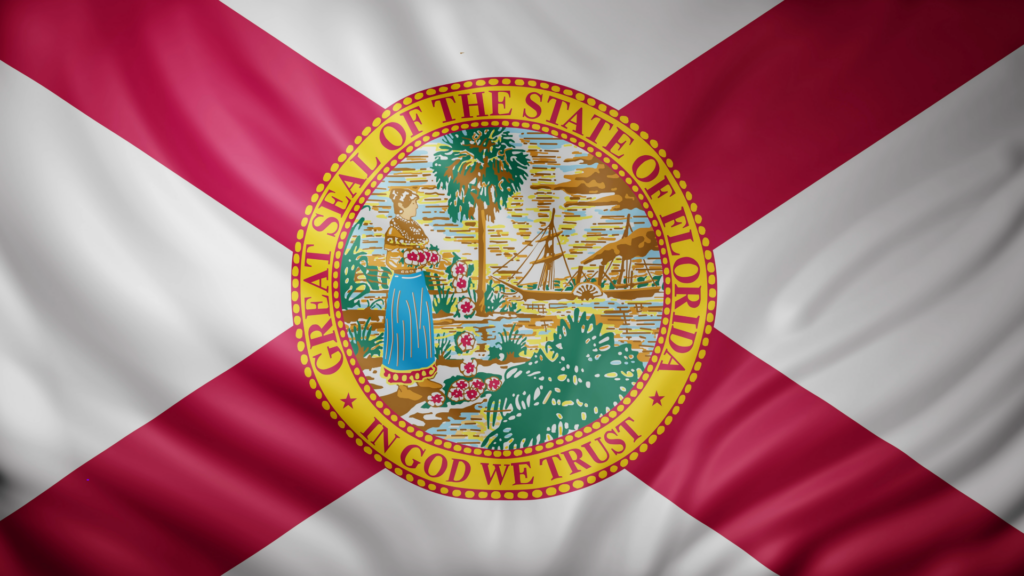
Information, Resources, and City References for Rainwater Harvesting in Florida State:
- The City of Fort Lauderdale recommends rain harvesting as green infrastructure to reduce flooding on your property, improve neighborhood quality, and increase property value.
- The City of Cape Coral suggests the use of rain barrels and rain harvesting to help limit the amount of stormwater runoff that reaches the local bodies of water.
- The City of Orlando, FL has a rain barrel workshop with information on rain harvesting and where rain barrels are given away for free.
- The Town of Cutler Bay, FL Stormwater Manual includes rainwater harvesting throughout the manual for residential and non-residential applications and potable and non-potable uses including stormwater management.
- The Saratosa County Low Impact Development Manual includes extensive information and details on implementing rainwater harvesting systems.
- The Florida Department of Environmental Protection maintains a page on green stormwater infrastructure and outlines rainwater harvesting as an effective and approved green infrastructure.
FL Codes on Rainwater Harvesting
The 2021 Florida State Statute Title XXXII Chapter 489.105 mentions rainwater catchment systems and mentions a licensed plumbing contractor is approved to perform any necessary work including installation of rainwater systems. The Statute also states a mandatory license requirement has not been set up or established for these services centered around rainwater collection systems. The title, section, chapter, and portion of the 2021 Statute says:
“A plumbing contractor may perform drain cleaning and clearing and install or repair rainwater catchment systems; however, a mandatory licensing requirement is not established for the performance of these specific services.”
The City of Key West, in the city’s Code of Ordinances requires rainwater harvesting systems to be included in certain property construction scenarios to receive a building permit. The City’s website also mentions the Key West building permit prerequisites which include rainwater collection systems for construction of new residential structures or significant renovation to an existing property. The City of Key West, Florida defines rainwater catchment as:
“Rainwater catchment system means an on-site rain water harvesting system including an associated reuse/redistribution system/plan, designed and built to American Rainwater Catchment System Association (ARCSA) standards.”
Additional Florida Rainwater Harvesting Resources
- Quick Facts on Rainwater Harvesting | South Florida Water Management District
- Cisterns to Collect Non-Potable Water for Domestic Use | University of Florida IFAS Extension
- Saving & Using Rainwater | University of Florida IFAS Extension
- 2020 Florida Plumbing Code, 7th Edition CH 13 Nonpotable Rainwater Collection | International Code Council Digital Codes
Georgia Rainwater Harvesting Law
The practice of rainwater harvesting for both residential and non-residential structures is legal and supported in the State of Georgia. Georgia State approves rainwater harvesting systems for outdoor and indoor, non-potable uses.
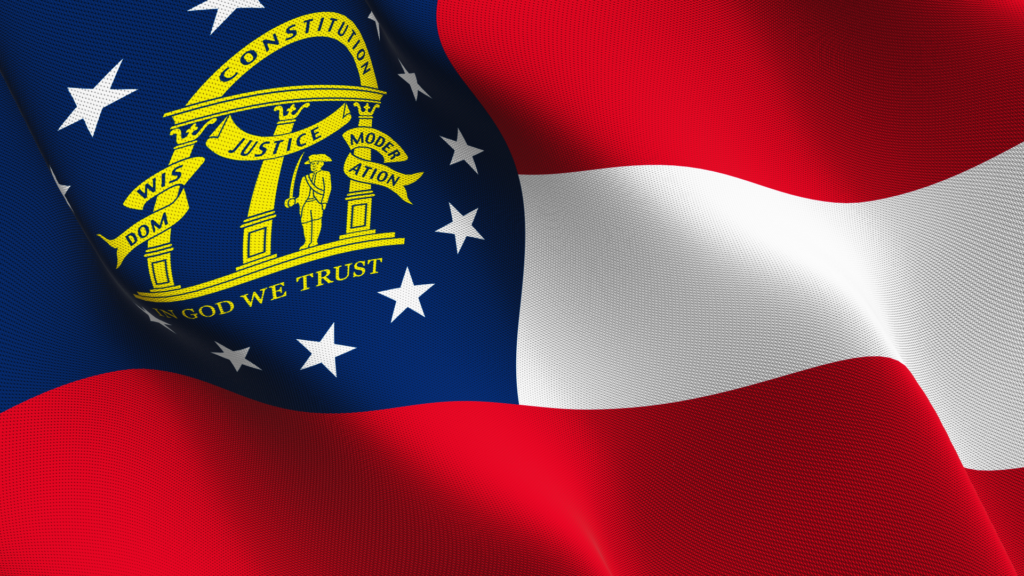
GA Legislature for Rainwater Harvesting
Georgia Legislature House Bill 1069 of 2010 was approved to provide income tax credits for qualifying water efficiency equipment, which includes water conservation equipment capable of storing rain water for future use, such as rain tanks in rainwater harvesting systems. Per Georgia HB 1069, an income tax credit of 25% up to $2,500 is allowed for the same year of installation of new energy or water efficiency equipment. According to 2010 Senate Highlights, the tax credit includes rain tanks and gray water receptacles.
Potable Uses & The City of Atlanta
Indoor, potable (drinking) water uses are not approved or covered by the State of Georgia but may be approved or acceptable on the local, city level. The City of Atlanta, GA in example approves the use of potable rainwater harvesting systems and has amended the City Code with Section 1300 Potable Rainwater Catchment Systems. This section of the Atlanta City Code maintains a full list of guidelines and requirements for home and business owners seeking to install a potable grade rain collection and use system.
Additional Considerations
The Georgia Department of Community Affairs, et. al., has prepared and publicly provided an extensive document titled “Georgia Rainwater Harvesting Guidelines” to help homeowners, farmers, businesses, contractors, and engineers alike to design, install and implement rainwater harvesting systems within Georgia State.
Rainwater systems in Georgia must meet the requirements of the Georgia Amendments to the International Plumbing Code.
“On January 1, 2009, Appendix I ‘Rainwater Recycling Systems’ of the Georgia 2009 Amendments to the 2006 International Plumbing Code took effect allowing rainwater harvesting in certain applications throughout the state.”
We recommend contacting your local Department of Community Affairs when planning to install a rainwater catchment system in Georgia.
Hawaii Rainwater Harvesting Law
Rainwater harvesting is legal, supported, and encouraged in the State of Hawaii. Many rural communities in Hawaii rely on rainwater catchment systems for their home water supply of both potable and non-potable water for both indoors and outdoors. Recent estimates in 2016 – 2020 say 30,000 to 60,000 residents across Hawaii make use of rain collection systems to provide their water needs.
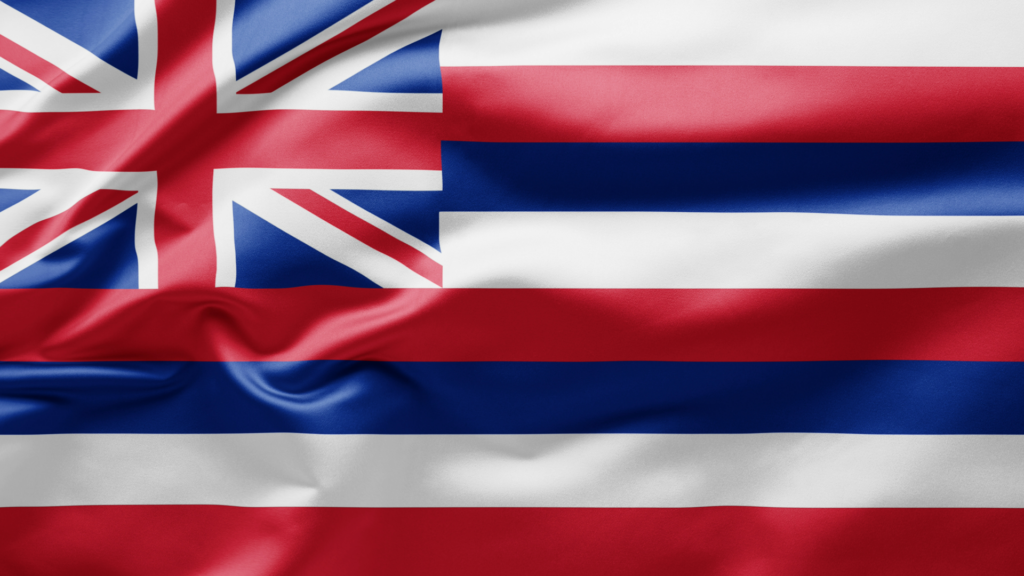
According to the State of Hawaii Department of Health, residential rain catchment systems are owned and operated by the homeowner. Systems are not regulated by the Department of Health or overseen by any other government agency. Therefore, the Hawaii Department of Health has provided a list of guidelines and recommendations on how to make a home rainwater catchment safe for domestic use. The Hawaii DOH also provides a list of rainwater catchment policy frequently asked questions to help Hawaiians design, set up and manage a rainwater system.
HI Rainwater Harvesting Guidance & Incentives
The University of Hawaii at Manoa has prepared and provided a guidance document to help homeowners set up and maintain rainwater catchment systems in Hawaii.
Rainwater catchment systems for businesses will be regulated for quality by the Hawaii Department of Health in the future when the State Legislature passes a bill relating to water catchment systems.
Hawaii Legislature is also considering an income tax credit bill to pass for water rationing and catchment systems, including rainwater harvesting.
The Hawaii Department of Transportation has proposed using rain water capture for non-potable water use activities at airports, in irrigation systems, and for groundwater recharge.
Useful Resources and References for Rainwater Harvesting in Hawaii:
- Hawaii Rainwater Catchment Systems Program | College of Tropical Agriculture and Human Resources
- Survey of Rainwater Catchment Use and Practices on Hawaii Island | Wiley Online Library
- How to Make Home Rainwater Catchment Safe for Domestic Use | State of Hawaii Department of Health Safe Drinking Water Branch
Idaho Rainwater Harvesting Law
Rainwater harvesting is legal in the State of Idaho as long as the collection of the water goes toward a beneficial use and does not impact the existing water rights of another individual. Idaho State maintains prior appropriation and riparian water rights laws due to the arid geography and limited precipitation across the state.
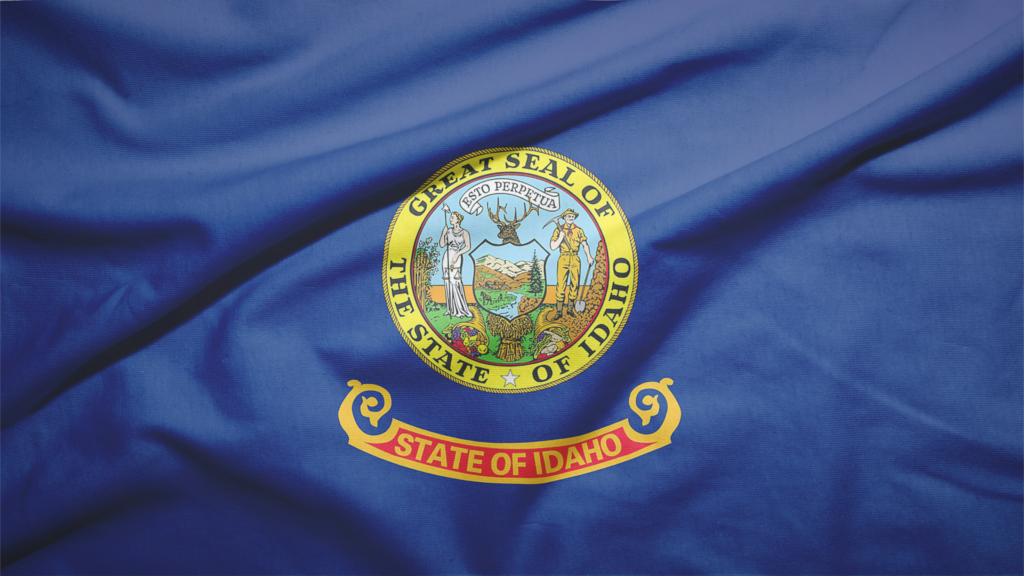
Illinois Rainwater Harvesting Law
The State of Illinois legally approves the construction and use of rainwater harvesting systems for both outdoor and indoor non-potable uses.
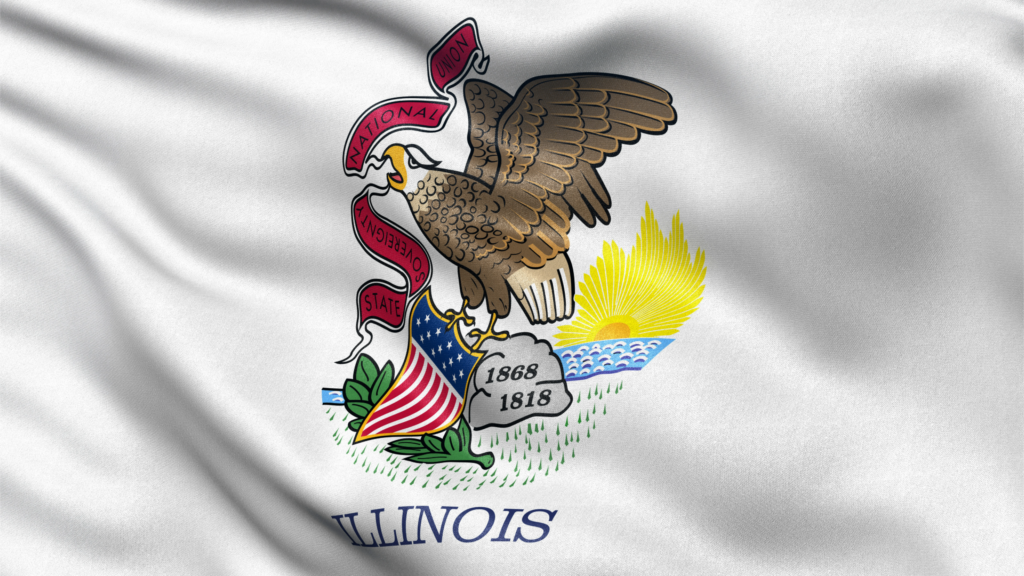
Illinois Rainwater Harvesting Legislature and Codes
According to the Illinois General Assembly Legislature and State Bill 0038, rainwater harvesting and distribution systems must be used for non-potable applications and comply with the State of Illinois Plumbing Code when used for indoor fixtures and appliances.
Word-for-word, the Illinois Legislature SB0038 says,
“Rainwater harvesting collection system” is a system for the capture, diversion, and storage of rainwater and consists of one or more cisterns, pipe, fittings, and appurtenances required for or used to harvest rainwater for non-potable purposes. These systems must be constructed in accordance with the Illinois Plumbing Code.”
The full details of Illinois SB0038 and the Illinois Plumbing Code indicate the support for and legality of using collected rainwater in indoor applications. In Illinois, indoor rainwater uses would currently be limited by legislature to non-potable applications only.
Illinois State Public Act 96-26 defines rainwater harvesting as “green infrastructure” and lists the practice acceptable for non-potable uses such as toilet flushing and landscape irrigation.
However, it is generally unclear whether the non-potable use rule applies to residential rainwater harvesting within Illinois or exclusively to non-residential systems and applications.
Indiana Rainwater Harvesting Law
No regulations, restrictions, or laws for or against rainwater harvesting can be found at this time for the State of Indiana. Some references indicate Indiana supports rain barrels and rainwater harvesting systems for outdoor irrigation such as watering gardens and lawns. However, no examples of larger rainwater capture systems and cisterns can currently be found for Indiana within government documentation.
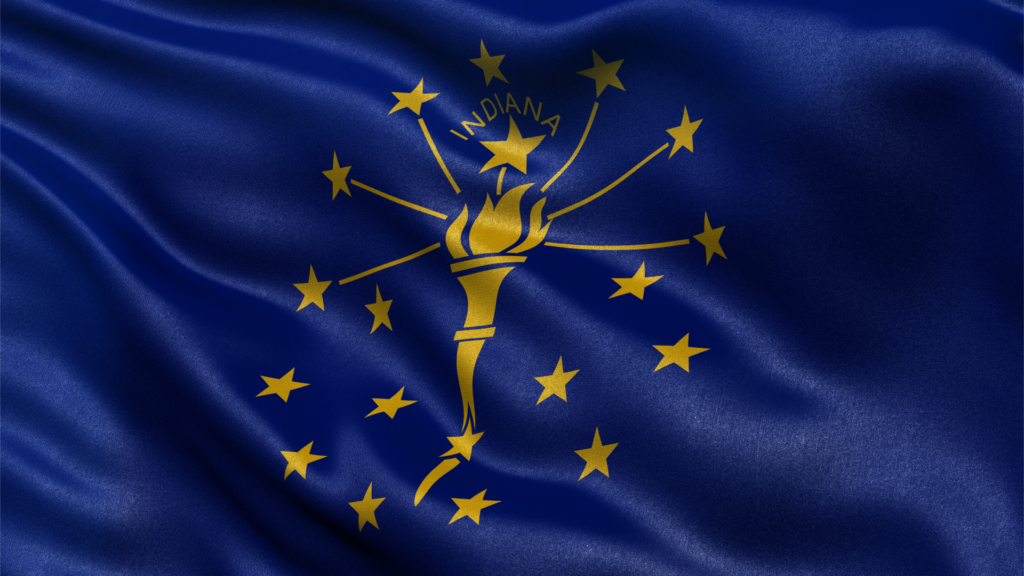
Although only limited information can be found, non-potable rainwater catchment and distribution systems are covered in Chapter 29 of the 2020 Indiana Residential Code. This indicates a general approval for rainwater harvesting systems to supply non-potable grade water for select uses in residential homes.
Examples and Information for Rainwater Harvesting in Indiana
The Indiana Department of Environmental Management (IDEM) has information on rain barrels, benefits, costs, and details encouraging rainwater harvesting.
The City of West Lafayette, IN has rain barrel information and the water treatment utility even provides rain barrels for sale as part of a rainwater rebate and information program.
The Northwest Indiana Regional Planning Commission offers information on what is a rain barrel.
Iowa Rainwater Harvesting Law
No regulations, restrictions, or laws concerning rainwater harvesting can be found at this time for the State of Iowa. Individual cities may provide rebates or programs for rain barrels that can be used in rain collection setups. Other cities may report growing efforts to incorporate and encourage rainwater harvesting for sustainability practices. However, legislation for Iowa State that encourages, regulates, or restricts rainwater harvesting practice cannot be found at this time.

Kansas Rainwater Harvesting Law
No regulations, restrictions, or laws concerning rainwater harvesting can be found at this time for the State of Kansas. Most related rules and regulations in Kansas apply to stormwater management, where rainwater harvesting is often recommended as a best management practice that can be successfully used to help control stormwater and rainwater runoff from a property or business.
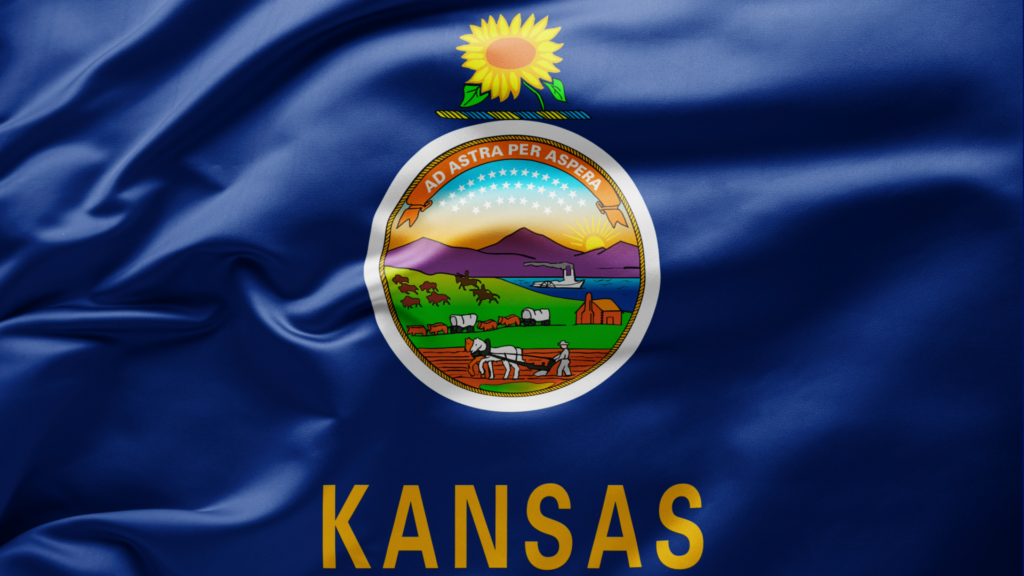
Kansas State Water Rights and Rainwater Harvesting
Kansas is a state with prior appropriation rights concerning water use and permissions that requires a water permit for all water uses except domestic uses. The Kansas Department of Agriculture defines domestic use as: ”water primarily used for the household, watering livestock on pasture, or watering up to two acres of lawn and gardens.” While rainwater harvesting is not mentioned, the practice may fall into this category and may not require a permit when the rainwater is used in domestic applications. All other uses of harvested rainwater will likely require a permit within the State of Kansas.
Kentucky Rainwater Harvesting Law
No regulations, restrictions, or laws concerning rainwater harvesting can be found for the State of Kentucky. Some recommendations on using collected rainwater and guidelines for setting up a system can be located from the University of Kentucky. Current legislation on the practice cannot be found at the time of this writing. However, there are indications the state highly encourages rainwater harvesting in agriculture.
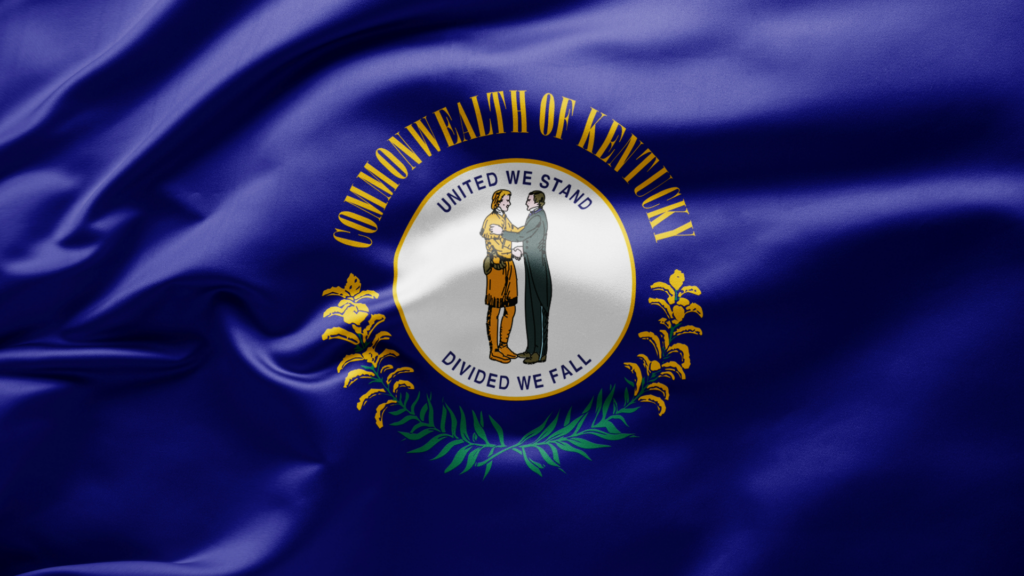
KY Rainwater Harvesting Programs
The State of Kentucky Energy and Environment Cabinet (EEC) has initiated an On-Farm Water Management Program (OFWMP) structured around Kentucky State’s agriculture sectors to improve the collection, management, and use of water on farms for crops and livestock. This includes the practice of rainwater harvesting as an alternative water source. For more information, see the KY EEC website page on the program here.
In Appendix B of the OFWMP application info and guidelines, the KY EEC and Department of Agriculture provide a full list of farm improvements, systems, and methods for managing water, such as rainwater harvesting, that are approved and covered by the program for funding.
See here for a list of current Kentucky Department of Agriculture programs, guidelines, and applications for current farm related programs, funding and improvement opportunities, and other information.
Additional Kentucky Rainwater Harvesting Resources
- Rainwater Harvesting for Livestock Production Systems | University of Kentucky
- Excel Calculator for Rainwater Harvesting Use in Livestock | University of Kentucky Cooperative Extension College of Agriculture, Food, and Environment
The City of Lexington, KY offers various grant options for projects, including rainwater harvesting, designed to improve water quality and help with the growing water concerns. Lexington, KY also offers grants for projects such as rainwater harvesting targeted to help businesses and non-profit organizations.
The Kentucky Energy and Environment Cabinet has a webpage on the Green Project Reserve outlining information and requirements for the State’s Drinking Water State Revolving Fund. The Kentucky State Revolving Fund provides funds for dedicated “green” projects, which include rainwater harvesting.
Louisiana Rainwater Harvesting Law
The practice of rainwater harvesting is legal in the State of Louisiana. All rainwater collection containers must be adequately secured and sealed to prevent breeding by mosquitoes and access by other pests.

In order to be in compliance with the Louisiana Administrative Code, all rain barrels, cisterns, or other rain collection containers must be properly installed and maintained with sufficient accessories or devices necessary to prevent the breeding and infestation of the collected rainwater by mosquitoes or other pests.
For rain barrels and cisterns, this may mean keeping the container securely closed with a lid and/or installing mosquito-proof screens at all open inlets and outlets. Underground rain cisterns are also listed as an acceptable means to prevent mosquito breeding when choosing to harvest rainwater in the State of Louisiana and be in compliance with code requirements.
Maine Rainwater Harvesting Law
There are no regulations, restrictions, or laws for rainwater harvesting in the State of Maine for personal use at residential homes.
For non-residential type applications, the practice of rainwater harvesting is encouraged in Maine as a low-impact development (LID) aimed at managing stormwater in connection with the State’s stormwater tax and control measures.
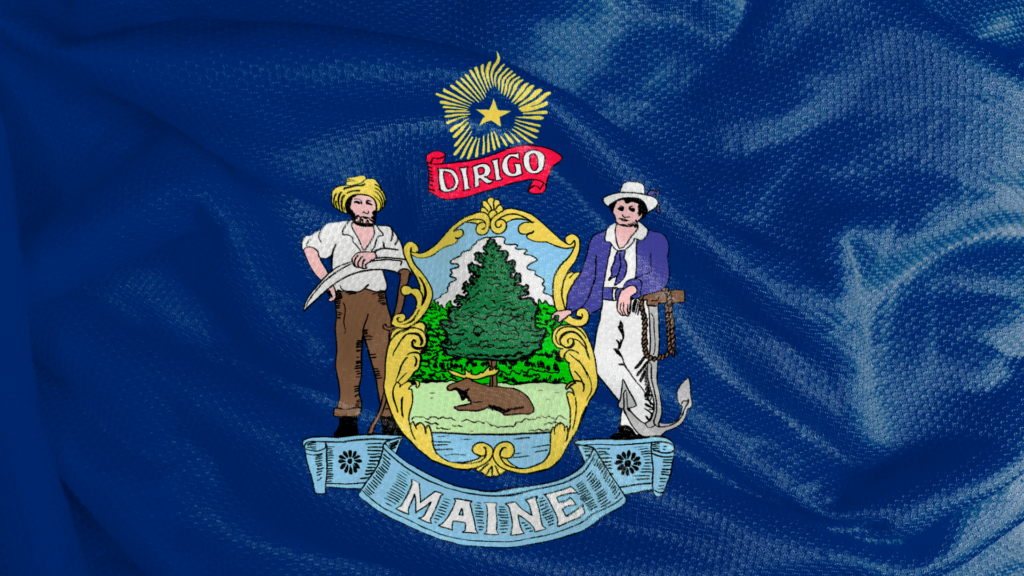
Maryland Rainwater Harvesting Law
Rainwater harvesting is legal, encouraged, and supported in the State of Maryland. Rainwater harvesting is often promoted as a stormwater best management practice and as a means to reduce nonpoint source pollution of both local and “downstream” environments. The practice of rainwater harvesting in Maryland is recommended for use in residential, commercial, municipal, and industrial use cases.

The Maryland Stormwater Design Manual Chapter 5: Environmental Site Design provides design guidance, performance requirements, and expectations for rainwater harvesting systems that will be used in indoor, on-premises applications.
- The Maryland State government also supports rainwater harvesting as a water conservation practice on the State’s website.
- Maryland’s water conservation page recommends using harvested rainwater for non-potable uses such as flushing toilets.
- Maryland’s Department of the Environment in their Stormwater Design Guidance – Rainwater Harvesting says indoor use of rainfall is typically limited to non-potable supply such as toilets, cleaning, and washing laundry.
Massachusetts Rainwater Harvesting Law
Rainwater harvesting is legal, encouraged, and supported in the State of Massachusetts. Several rainwater harvesting projects have been performed, researched, and reported on by the State’s Division of Water Supply Protection.

According to the Massachusetts Metropolis Area Planning Council Low Impact Development Toolkit on rainwater harvesting:
- “Rain barrels and cisterns can reduce water demand for irrigation, car washing, or other nonpotable uses. Property owners save money on water bills and public water systems experience lower peak demand and less stress on local water supplies.
- Property owners who have cisterns and rain barrels can use stored water for landscape purposes, even during outdoor watering bans.
- If installed and used properly, rain barrels and cisterns can reduce stormwater runoff volume through storage, and will also help to reduce the peak discharge rate.”
MA Rainwater Harvesting Programs & Research
In Massachusetts, rain barrel programs and discount sales events are available depending on the city and season and serve as an indicator of the State’s support of rainwater harvesting for water conservation.
The City of North Hampton, MA of the Pioneer Valley Planning Commission has provided an Understanding Rain Water Harvesting guide with information on rain catchment systems as green infrastructure within Massachusetts State.
The University of MIT proposed the installation of rainwater collection systems in 2015 to supplement water usage demands for a planned unit development on a portion of the school grounds. The project was estimated to save approximately 5,000,000 gallons of water annually through the use of the rainwater collection and cistern system.
The City of Rockport, MA recommends rainwater harvesting as a means to reduce stormwater pollution concerns by home and property owners.
Michigan Rainwater Harvesting Law
Rainwater harvesting is legal, encouraged, and supported in the State of Michigan. Rainwater harvesting is recommended as a low impact development (LID) within best management practices (BMPs) for mitigating and improving the negative effects of stormwater within Michigan’s Nonpoint Source Program Plan. Rainwater harvesting is also listed as an approved project category within green infrastructure for the Michigan State Drinking Water Reserve Fund.
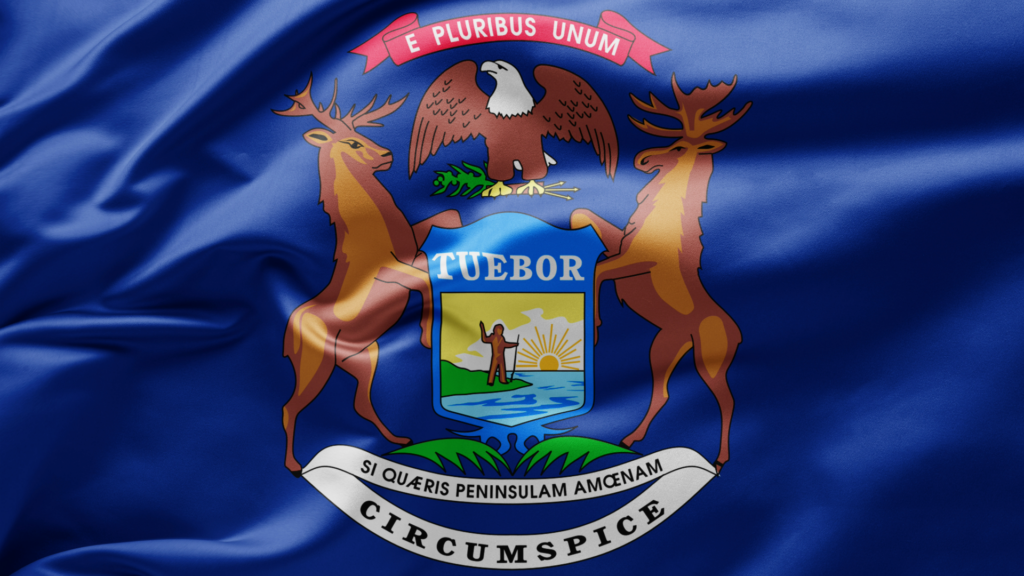
Indoor use of rainwater harvesting for non-potable applications is covered in the 2018 Michigan Plumbing Code in Appendix A Non Potable Water Systems.
Minnesota Rainwater Harvesting Law
Rainwater harvesting is legal, encouraged, and supported in the State of Minnesota. No permit or professional installation is required for non-potable rainwater systems that will be used exclusively outdoors for lawn irrigation in the State of Minnesota. Almost any other non-potable use of harvested rainwater in Minnesota will have to meet the requirements of the Minnesota Administrative Code.
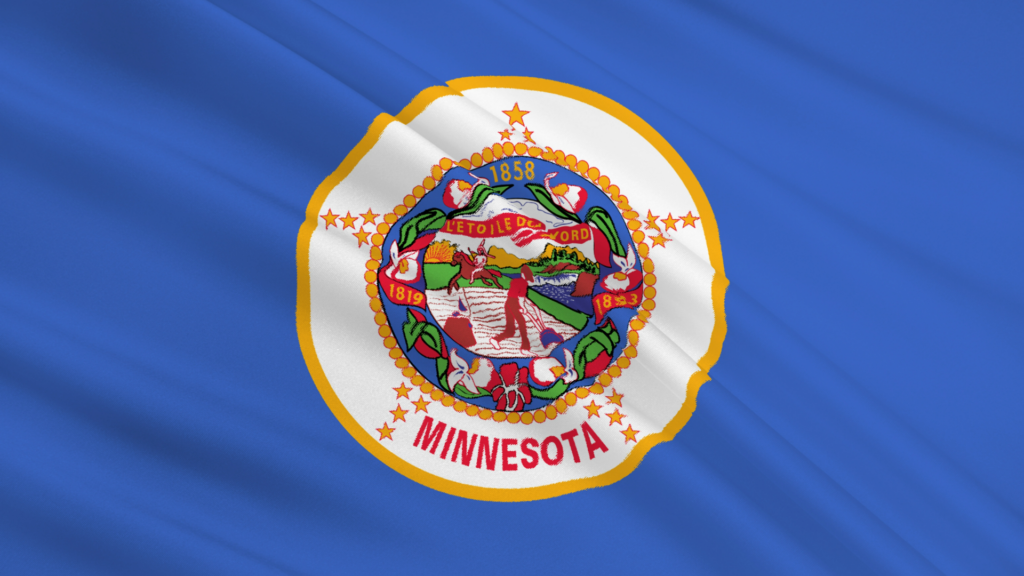
MN Rainwater Harvesting Codes
Non-potable rainwater catchment systems are covered and outlined in Minnesota Administrative Code 4714.1601, current as of February 2, 2022. Minnesota administrative rules applicable to the Uniform Plumbing Code (UPC) cover the specific requirements for plumbing components and equipment collectively and exclusively for non-potable rainwater harvesting systems that will be used indoors.
The 2020 Minnesota State Plumbing Code maintains definitions, requirements, and standards for non-potable rainwater catchment systems that will be used indoors in Chapter 16 of the manual. The MN Plumbing Code says that such non-potable rainwater harvesting systems will require permits and will need to be installed by a licensed professional.
Harvesting Rainwater for Stormwater and Environmental Management
Concerning commercial applications, the State of Minnesota Pollution Control Agency provides an in-depth stormwater manual as an inclusive overview and guide to managing stormwater that includes rainwater use and reuse.
The Minnesota GreenStep Cities program also provides best action practice details for rainwater harvesting use in environmental management.
Minnesota RWH Research & Potable Uses
The State of Minnesota is actively investigating and publishing research centered around rainwater catchment systems and stormwater reuse. The MN Department of Health has published several reports, some as recent as January 2022, concerning the safety of rainwater for reuse as well as the feasibility and recommendations on the practice of rainwater harvesting.
For potable rainwater harvesting systems, Minnesota State allows rainwater as a source of drinking water but must meet the purity and quality standards in the State’s “Surface Water Treatment Rule.” The State of Minnesota does not currently recommend potable use of harvested rainwater for homeowner use due to the amount of treatment and monitoring that would be required by the property owner.
Mississippi Rainwater Harvesting Law
Rainwater harvesting is legal, encouraged, and supported in the State of Mississippi. Currently, there aren’t any state-specific codes in place that regulate the practice of collecting and using rainwater in Mississippi.

The Mississippi Department of Environmental Quality includes the use of rain barrels and cisterns for rainwater harvesting in the General Planning Concepts section of the Mississippi Handbook for Stormwater Management.
The Mississippi Watershed Management Organization recommends rainwater harvesting as a way to limit and prevent pollution in the Mississippi.
Missouri Rainwater Harvesting Law
Rainwater harvesting is legal to practice in the State of Missouri with legislature code to support the activity. Missouri State approves the use of rainwater harvesting systems and rainwater for both outdoor and indoor applications and for both non-potable and potable uses.

Missouri Statute on Rainwater Harvesting
The Revised Statutes of Missouri 640.648 (RSMO 640.648) went legally into effect on August 28, 2018, and says:
“640.648 RSMo – Right to private water systems and ground source systems retained, exceptions — right to rainwater collection systems retained.
- Notwithstanding any law to the contrary, all Missouri landowners retain the right to have, use, and own private water systems and ground source systems, including systems for potable water, anytime and anywhere including land within city limits, unless prohibited by city ordinance, on their own property so long as all applicable rules and regulations established by the Missouri department of natural resources are satisfied. All Missouri landowners who choose to use their own private water system shall not be forced to purchase water from any other water source system servicing their community.
- Notwithstanding any law to the contrary, all Missouri landowners retain the right to have, use, and own systems for rainwater collection anytime and anywhere on their own property, including land within city limits.”
Therefore, according to the Missouri State Revised Statute, Missouri home and landowners can use rainwater catchment systems to collect rainwater as a private water system for use on their property, even for potable water.
The City of St. Louis, MO recommends disconnecting downspouts and using rainwater harvesting to water lawns and gardens, wash cars, and clean outdoor surfaces.
Montana Rainwater Harvesting Law
Rainwater harvesting is legal to practice in the State of Montana. Information is more centered around the use of rain barrels to collect rainwater from rooftops to water lawns and gardens. Collected rainwater must be kept in mosquito-proof containers.
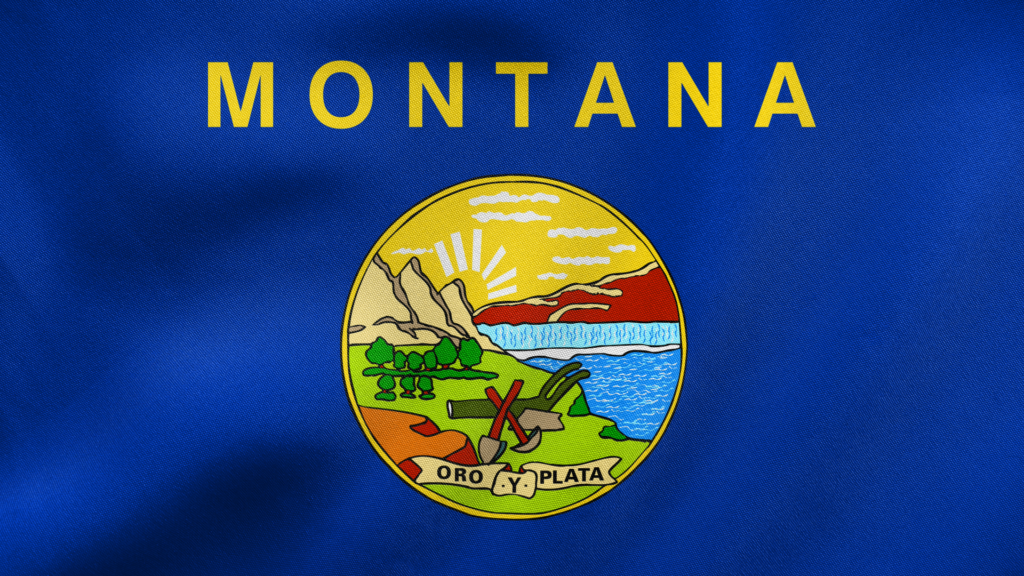
A Montana Water Supply Initiative drafted by the MT DNRC indicates rainwater and wastewater use and reuse policies continue to be developed and that any individual planning for a rainwater harvesting system greater than 0.1 acre feet contact the Montana DNRC department before moving forward.
Montana State Rainwater Source Information
- Stormwater Information | Montana Department of Transportation
- Lower Missouri River Basin Water Plan 2014 | Montana Department of Natural Resource & Conservation (see page 25)
Nebraska Rainwater Harvesting Law
The State of Nebraska does not have any rules, regulations, or requirements concerning the practice of rainwater harvesting.
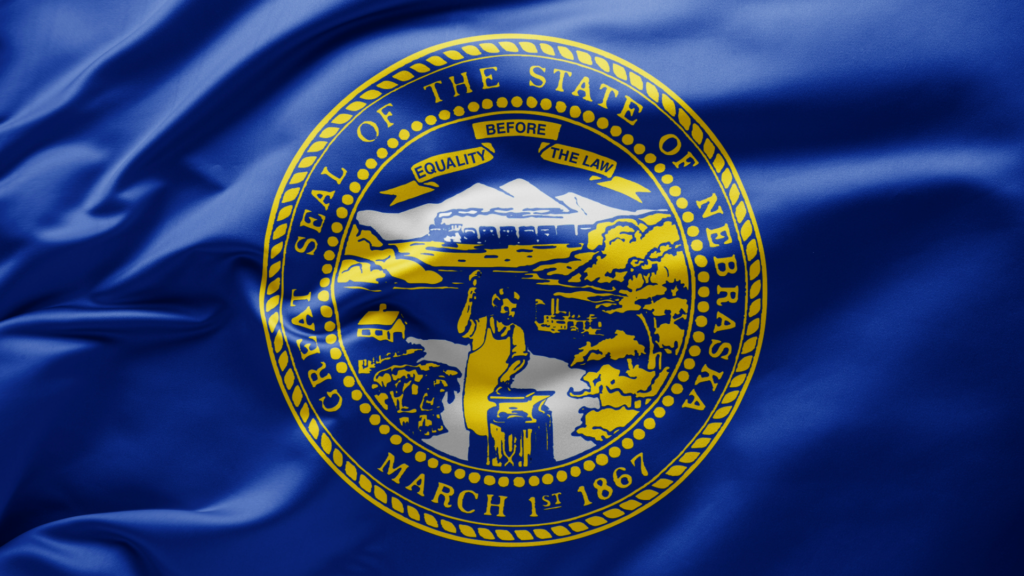
Several cities in Nebraska support and encourage rainwater harvesting with informative how-to pages for rain barrels as well as rain barrel programs and selling events for residents.
The University of Nebraska, Lincoln also provides several resources concerning the practice of rainwater harvesting, showing the state’s support and approval.
The City of Lincoln, NE provides information on rainwater harvesting and details on water conservation for Nebraska State residents.
Nevada Rainwater Harvesting Law
Rainwater harvesting is legal in the State of Nevada and officially became legal to practice in the year 2017. In 2017, the Nevada State legislature passed Assembly Bill 138, which allows Nevada residents to collect rainwater from the rooftop of single-family dwellings in rain barrels or cisterns for non-potable domestic use such as to water lawns and landscapes and to be able to do so without requiring a water permit.

Rainwater harvesting in Nevada is recommended for use to supply water to livestock, pets, and other wildlife (i.e. guzzlers), to wash vehicles, and to supplement indoor, non-potable water applications such as flushing toilets.
The University of Nevada, Reno has a low impact development resource that supports rainwater harvesting practice and provides general information on systems, design, uses, maintenance, and more in the State of Nevada.
New Hampshire Rainwater Harvesting Law
There are no regulations, restrictions, or laws for rainwater harvesting in the State of New Hampshire for outdoor applications. Rainwater harvesting practice is encouraged and supported by the New Hampshire government. The Department of Environmental Services maintains the “Soak Up the Rain” program that invites New Hampshire residents to contribute to water conservation and environmental cleanup and protection efforts.
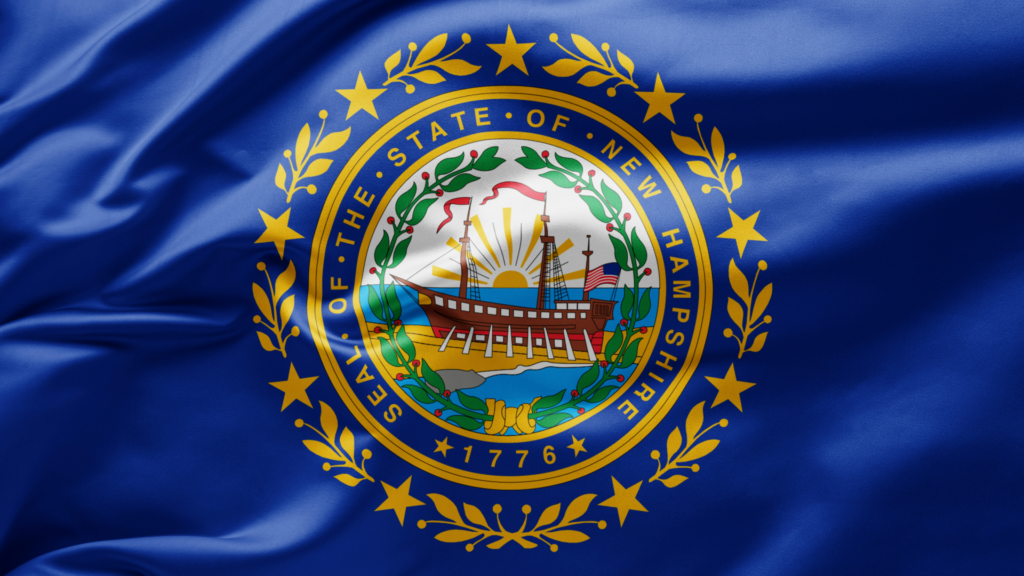
The New Hampshire Department of Environmental Services also provides a Homeowner’s Guide to Stormwater Management as an in-depth resource to water management options including rainwater harvesting.
For indoor uses, New Hampshire approves rainwater harvesting for non-potable water type applications. Standards, guidelines, and approved applications are covered in the 2018 New Hampshire Residential Code Chapter 29 and 2018 New Hampshire Plumbing Code Chapter 13.
New Jersey Rainwater Harvesting Law
The State of New Jersey does not have any rules, regulations, or requirements that can currently be determined concerning the practice of rainwater harvesting.

The New Jersey Department of Environmental Protection encourages the act of rainwater harvesting as a best management practice for stormwater control systems and requirements of state stormwater control.
The University of Rutgers, New Jersey maintains the New Jersey Water Savers website that promotes rainwater harvesting and information as a water conservation activity for residents, businesses, municipalities, and educators.
New Mexico Rainwater Harvesting Law
Rainwater harvesting practice is legally approved, supported, and encouraged in the State of New Mexico for on-site residential and commercial domestic uses. The New Mexico Environment Department in their Green Infrastructure Implementation in New Mexico document states:
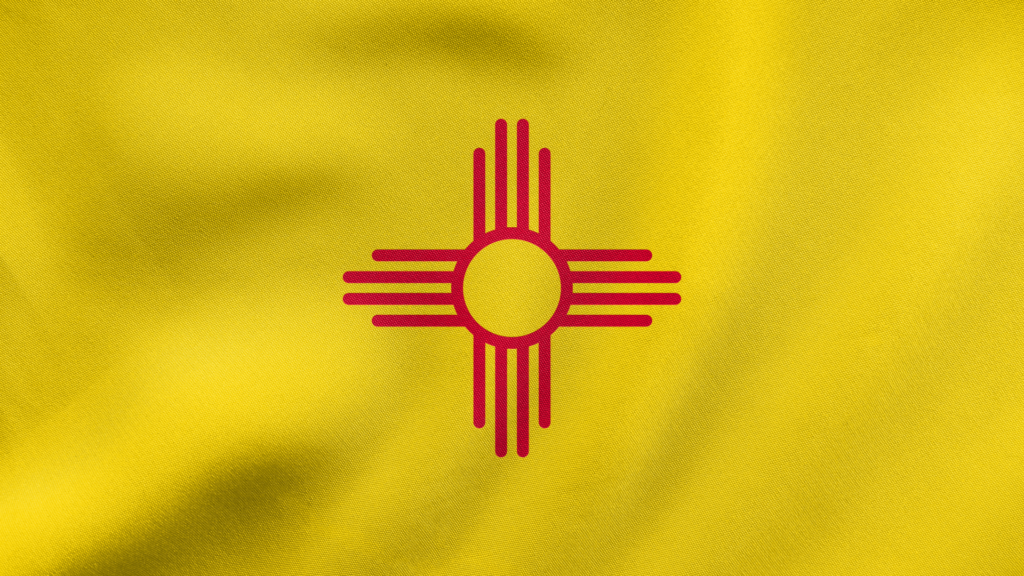
“The New Mexico Office of the State Engineer supports the wise and efficient use of the state’s water resources; and, therefore, encourages the harvesting, collection and use of rainwater from residential and commercial roof surfaces for on-site landscape irrigation and other on-site domestic uses. The collection of water harvested in this manner should not reduce the amount of runoff that would have occurred from the site in its natural, pre-development state. Harvested rainwater may not be appropriated for any other uses.”
Domestic uses in Santa Fe, New Mexico are defined as:
“The use of water for indoor and outdoor household purposes, including water used for drinking, sanitation, the irrigation of not to exceed one acre of noncommercial trees, lawn, garden, or landscaping, the care and feeding of household pets, and such uses of water incidental to a governmental, commercial or non-profit facility. Domestic uses do not otherwise include the use of water for agricultural purposes, and do not include any use of water for commercial, industrial, community or livestock watering purposes.”
Additional New Mexico State Rainwater Harvesting Resources
- A Waterwise Guide to Rainwater Harvesting | New Mexico Office of the State Engineer
- Rainwater Harvesting: Supply from the Sky | New Mexico Office of the State Engineer
- Bernalillo County Residential Rainwater Harvesting Training Overview
New York Rainwater Harvesting Law
Rainwater harvesting is legal, supported, and encouraged in the State of New York. The New York State Rainwater Harvesting Guide drafted by Syracuse University says, “While there are laws pertaining to rainwater harvesting in some states, New York is not one of them.”
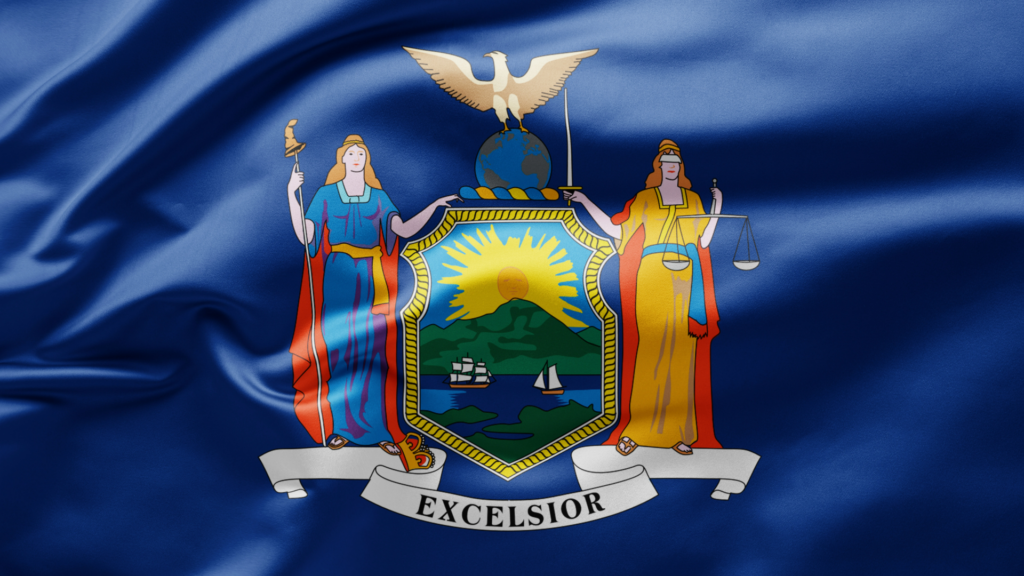
In fact, New York Senate Assembly Bill A9148 proposes a rainwater harvesting pilot program to “study the cost benefits and environmental benefits of rainwater harvesting for educational facilities throughout the state.”
The New York State Department of Environmental Conservation recommends the use of rain barrels to save water.
Also, many cities in New York State offer rain barrel rebates or programs, not just New York City, which has the NYC Environmental Protection agency and the Rain Barrel Giveaway program.
The GrowNYC organization is a green project and environmental conservation organization that has helped install rainwater harvesting systems as green infrastructure in New York City gardens.
North Carolina Rainwater Harvesting Law
Rainwater harvesting is legal, supported, and encouraged in the State of North Carolina. In 2009, North Carolina Legislature State Law 243 changed the plumbing code to allow the use of cistern water in both residential and commercial buildings. The NC law allows harvested rainwater to be used indoors to provide water for flushing toilets and outdoors for irrigation. The North Carolina Department of Environmental Quality says, “The law prevents any state, county or local building code, or regulation from prohibiting the use of cisterns for these applications.”

North Carolina Rainwater Harvesting Resources
- MDC for Rainwater Harvesting Stormwater Management | North Carolina Department of Environmental Quality
- NCDEQ Stormwater Design Manual | North Carolina Department of Environmental Quality
- Rainwater Harvesting: Guidance for Homeowners | North Carolina State University
North Dakota Rainwater Harvesting Law
Laws, regulations, or rights for or against rainwater harvesting in the State of North Dakota cannot be found at the time of this writing.
Some limited information can be found considering the use of rainwater harvesting practices wherever and whenever practical to prepare for and respond to drought conditions.
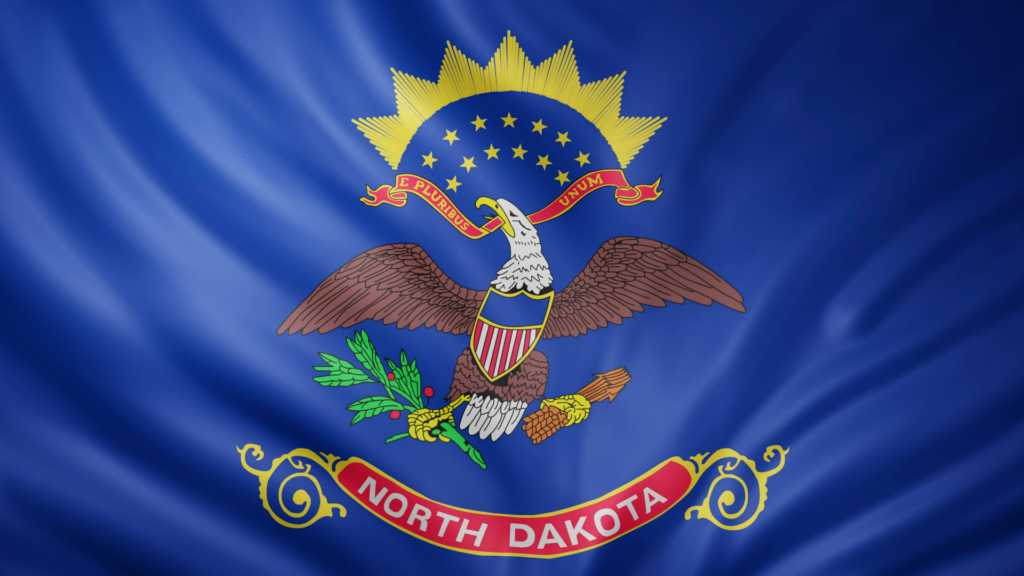
Ohio Rainwater Harvesting Law
The practice of rainwater harvesting is legal, encouraged, and supported in the State of Ohio for both non-potable and potable usage applications.
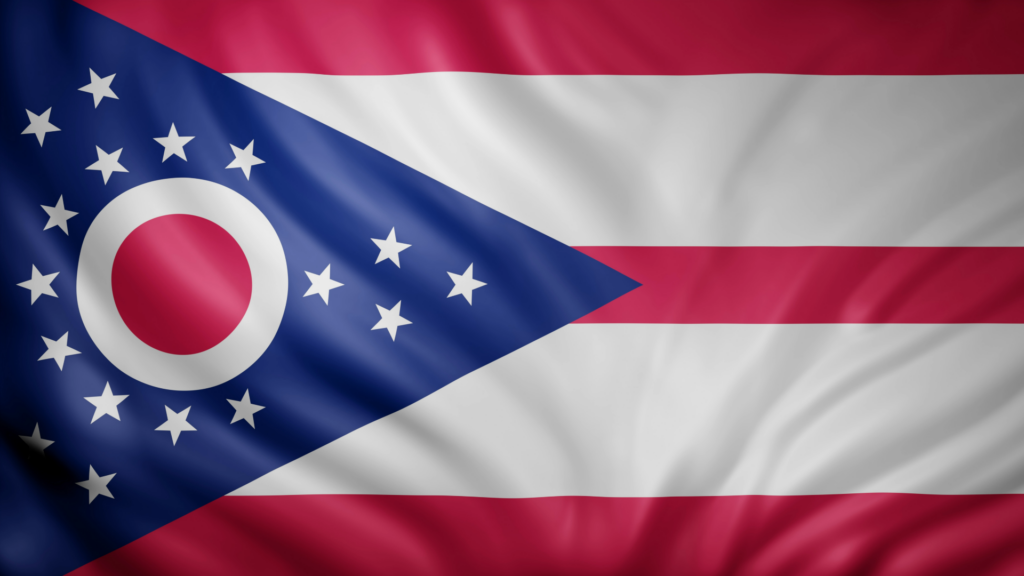
The State of Ohio Administrative Code Rule 3701-28-12, effective Jan. 1, 2020, outlines the requirements and standards for rainwater cisterns and equipment. Note, this applies when rainwater harvesting systems will be used for residential and non-residential private water systems. By definition in Ohio Code 3701-28-01, a “Private Water System” means any water system, other than a public water supply system, for the provision of water meant for human consumption.
This means rainwater harvesting for potable use is legal in Ohio State and is approved per Ohio Revised Code 3701.344 Rules for Private Water Systems, given the private system has “fewer than fifteen service connections and does not regularly serve an average of at least twenty-five individuals daily at least sixty days out of the year”. Outside these requirements and the water system is no longer considered a private water system but a public water system and different regulations and permits would apply.
RWH Resources in Ohio
The Ohio Department of Natural Resources has several pages and resources that reference rainwater harvesting as an alternative water source, as a means of water conservation, and as a best management practice for water quality control and managing stormwater. This therefore indicates the State’s support of the practice.
The City of Columbus, OH has several resources dedicated to residents with information on putting rainwater to use through rainwater harvesting and rain barrels.
Oklahoma Rainwater Harvesting Law
Rainwater harvesting is legal, encouraged, and supported in the State of Oklahoma. Limited regulatory information can be determined at this time.
The Oklahoma State Department of Environmental Quality provides a “What is Rainwater Harvesting” publication flier that outlines basic guidelines and information on harvesting rainwater, indicating the State’s support of the practice for outdoor, residential applications.

Oklahoma City, OK encouraged residents to conserve water through the use of rain barrels in a sale program offered by Oklahoma City and the Central Oklahoma Storm Water Alliance.
Oregon Rainwater Harvesting Law
Rainwater harvesting is legal, encouraged, and supported in the State of Oregon. According to Oregon State Code, rainwater harvesting is an exempt use of surface water that does not require a water permit.
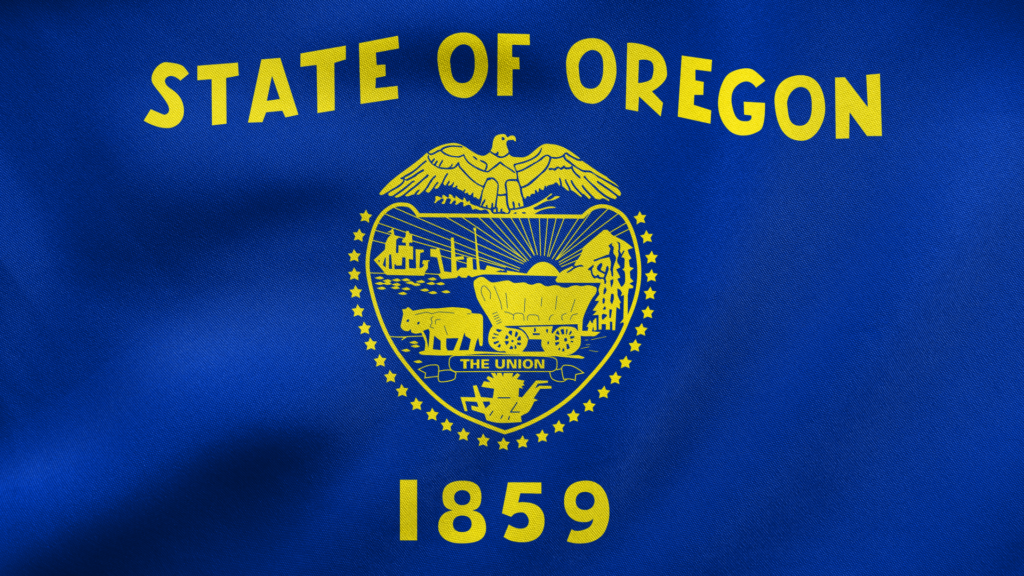
Oregon Code Guide to Rainwater Harvesting
The Portland Permitting & Development Services (PPD) public works outlines many common questions and answers regarding the codes and potential permit requirements of a rainwater harvesting system. The Code Guide lists the requirements for rainwater systems and components. When choosing to use a rainwater container in Portland, OR the code guide says that any cistern or multiple cisterns must have a minimum volume capacity of 1,500 gallons. This means the cistern, or cisterns, must be able to hold 1,500 gallons of rainwater or more.
Potable Rainwater Systems
In Oregon, potable rainwater harvesting systems intended for drinking water and indoor uses will need to be properly reviewed through the Bureau of Development Services administration appeals process. Potable rainwater systems in Oregon will have to maintain a level of filtration and disinfection to meet State and Federal safe drinking water standards.
Non-potable Rainwater Systems
In Oregon, the BDS Code Guide says for a non-potable rainwater harvesting system that will be used for irrigation use only and “is completely separate from the municipal water system and any plumbing in the structure, [will not be] regulated by this code guide” and no plumbing permit will be required. However, additional permits may be needed for electrical or grading on the property as applicable to the system and equipment being installed.
Oregon Water Rights
In Oregon, water is owned by the public, and therefore, state law allows residents to capture rainwater from their roofs and store the water for personal property use (source: Oregon State University). The Building Codes Division of the Oregon Department of Consumer and Business Services provides a Smart Guide to Rainwater Harvesting that includes considerations for the building codes that may be required in the State of Oregon.
Additional Oregon State Rainwater Harvesting Resources
- Who’ll Catch the Rain | Sightline Institute Recommends Upgrading Rain Barrels to Larger Volume Cisterns
- Clean River Program | City of Portland, Oregon
- Downspout Disconnect Program | City of Portland, Oregon
- WaterWise Landscape Demonstration | City of Eugene, Oregon
Pennsylvania Rainwater Harvesting Law
The State of Pennsylvania does not have any rules, regulations, or requirements concerning the practice of rainwater harvesting.
The Pennsylvania State Department of Environmental Protection recommends rainwater harvesting as a way to be smart about managing stormwater.

The City of Philadelphia, PA offers low interest loans for nature based solutions to non-residential properties for water and environmental management practices. See the following for examples of green infrastructure and sustainability projects in the City of Philadelphia, including rainwater harvesting.
Rhode Island Rainwater Harvesting Law
Rainwater harvesting is legal, encouraged, and supported in the State of Rhode Island. In State Legislature, House Bill 7070 Chapter 44-30-28 allows Rhode Island residents the option to receive an income tax credit of 10% up to $1,000 to “install a cistern on their property to collect rainwater for use in their home or business.”

The City of Providence, RI recommends the practice of rainwater harvesting as a way for personal individuals to help reduce environmental damage concerns and prevent stormwater pollution.
South Carolina Rainwater Harvesting Law
The practice of rainwater catchment is legal and encouraged in the State of South Carolina for non-potable, outdoor applications. Rainwater harvesting is promoted as a low impact development option in stormwater management and pollution control for both residential and non-residential structures. Potable use of harvested rainwater is not allowed at this time for South Carolina.
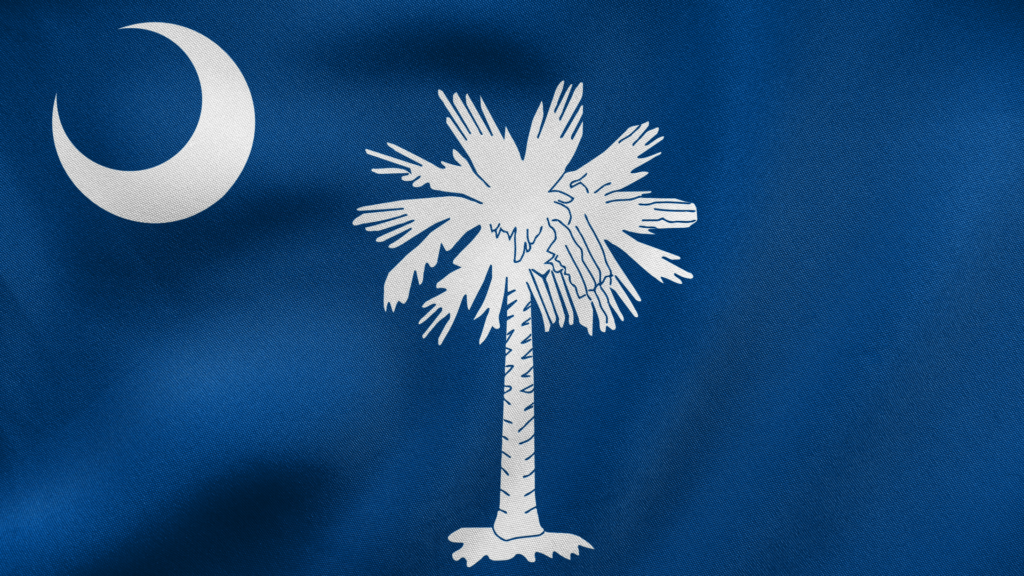
The County of Greenville, SC provides a technical specification and overview on rainwater harvesting in South Carolina.
The City of Charleston, SC encourages rainwater harvesting as part of the city’s “rainproof program.” Charleston also offers various resources on rainwater catchment and advertises an annual rain barrel sale.
South Dakota Rainwater Harvesting Law
Rainwater harvesting is legal practice in the State of South Dakota. Rainwater is classified as surface water, and surface water in South Dakota is said to be owned by the people of South Dakota. The South Dakota Department of Agriculture and Natural Resources says this applies to rainwater and its collection in catchment systems as the people’s right to harvest rainwater for on-site domestic uses.
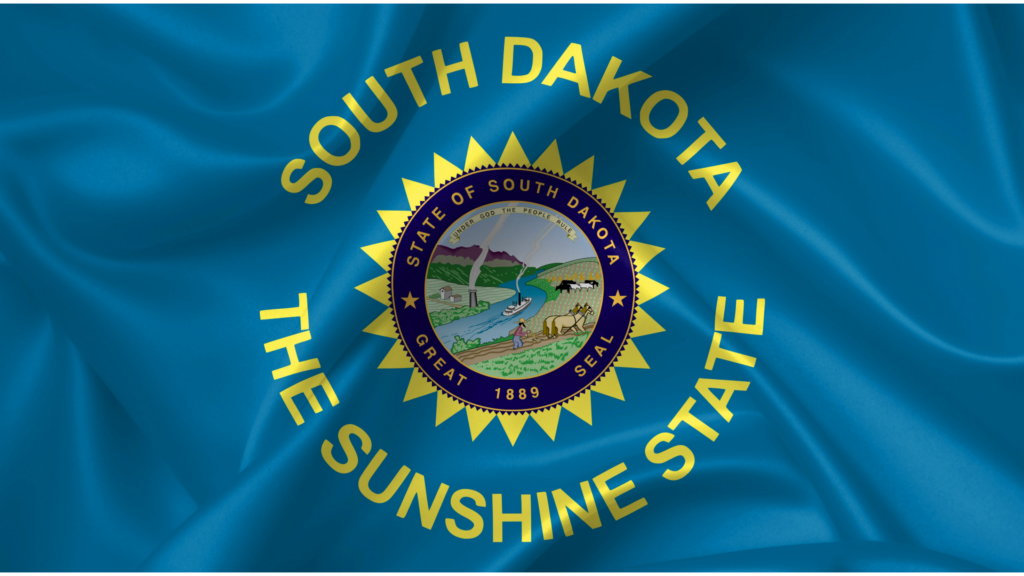
Water Rights in South Dakota
Concerning water rights, in most cases a water rights permit will not be required to harvest rainwater in South Dakota when water is intended for domestic applications. In the state, domestic water uses include both potable and non-potable uses in households, some educational and care facilities, and in certain livestock watering scenarios.
See South Dakota Codified Law 46-1-6(7) for the State’s definition of domestic uses.
When a Rainwater System May Need a Permit
Commercial, industrial, municipal, and agricultural uses for a rainwater harvesting system as a private water system may require a water permit from the State of South Dakota. The need for a water rights permit may depend on the system size, water volume use, and specific usage of the collected rainwater.
See the South Dakota Department of Agriculture and Natural Resources for more info on water rights and permits in South Dakota.
Potable grade rainwater harvesting systems and uses most often require permits, inspections, and/or design and installation by an engineer or properly licensed contractor due to health and safety concerns and the work extent of the job.
Harvesting Rainwater for Stormwater Management in South Dakota
The SD State Legislature has approved rainwater catchment under the State’s Clean Water State Revolving Fund as an effective improvement means for the “management, reduction, treatment, or recapture of stormwater or subsurface drainage water.” This again, and similar to other U.S. states, would put rainwater harvesting into the category of low impact development (LID) and stormwater best management practices (BMP).
Tennessee Rainwater Harvesting Law
Rainwater harvesting is legal, encouraged, and supported in the State of Tennessee. Many cities in Tennessee State support and encourage residents to practice rainwater harvesting through rain barrel rebates, sales programs, and informative guides.

- Nashville, TN has community education on rain barrels, rain harvesting, and how to use water wisely.
- The City of Franklin, TN conducted a rainwater feasibility assessment for use of rainwater harvesting within the city for different sectors and applications.
- The City of Millington, TN located outside Memphis, TN opted to include a rainwater harvesting system in the design of Discovery Nature Park for use in irrigation and watering of open green space.
Texas Rainwater Harvesting Law
Rainwater harvesting is legal, supported, and highly encouraged in the State of Texas. Texas ranks among the top U.S. states that have supported the development of rainwater harvesting with research, information, laws, and incentives for residents and businesses.

The Texas Manual on Rainwater Harvesting provided by the Texas Water Development Board is a significant resource that is frequently cited and referenced due to its collection of information on the rainwater harvesting method.
Texas Rainwater Harvesting Codes
In the State of Texas, enacted rainwater harvesting laws include:
- Texas Tax Code 151.355 – allows an exemption of state sales tax to be provided on the purchase of rainwater harvesting equipment.
- Texas Tax Code §11.32 – allows a tax-exempt status to be provided for part or all of the assessed property value on which water conservation initiatives such as rainwater harvesting are made.
- Texas Property Code 202.007 – prevents a homeowner’s association from being able to restrict residents of the HOA from being able to install a rainwater harvesting system.
- Texas House Bill 3391 – requires new buildings of state, including institutions of higher education, that meet certain criteria to include rainwater harvesting system technology and approves loan origination by financial institutions for designs that will use rainwater as the sole source of water supply.
Additional Considerations for Harvesting Rainwater in Texas
Some public water systems in the State of Texas use or are considering the use of rainwater harvesting for collection, treatment, and distribution to residents as a supply of potable water.
A Texas State organization focused on caring for the State – TakeCareOfTexas.org – recommends rainwater harvesting for home use and provides a rainwater collection how-to guide.
Utah Rainwater Harvesting Law
Rainwater harvesting is legal in Utah with a total allowed storage capacity up to 2,500 gallons. This is per Utah Law Code 73-3-1.5 which covers the capture, storage, and use of precipitation on an individual’s property. The collection of precipitation in Utah must go to beneficial use. Rain storage containers will either require or not require registering with the State.
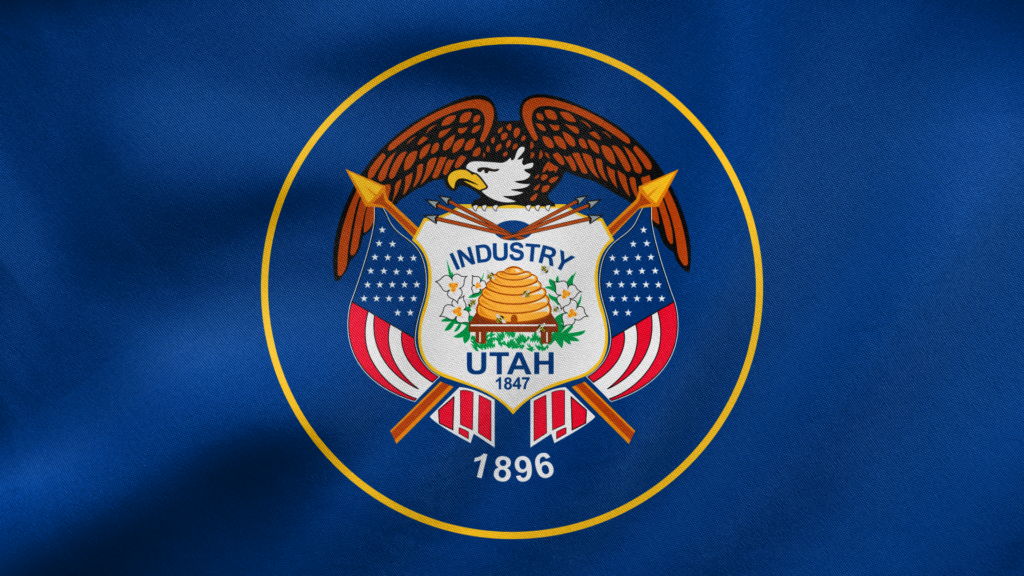
One to two containers up to 100 gallons each (for a 200 gallon max total) will not require registration. Any container greater than 100 gallons up to 2,500 gallons and/or systems with more than two containers will require an individual to register the system with the State of Utah Division of Water Rights.
State of Utah Rainwater Harvesting Codes
From the Salt Lake City, UT website (www.slc.gov) on rainwater harvesting within the State of Utah:
Utah State law (Utah Code 73-3-1.5) allows rain catchment storage up to 2,500 gallons maximum, with the following qualifiers:
- A person may collect and store precipitation without registering in no more than two covered storage containers if neither covered container has a maximum storage capacity greater than 100 gallons
- Collection in more than two (2) containers or with a volume greater than 100 gallons must be registered
- Collection and use are limited to the same parcel of land on which the water is captured and stored
- There is no cost for registration
- To register your rain catchment system, visit: http://www.waterrights.utah.gov/forms/rainwater.asp
Vermont Rainwater Harvesting Law
No laws, regulations, or rights concerning the practice of rainwater harvesting in the State of Vermont can be found at this time.
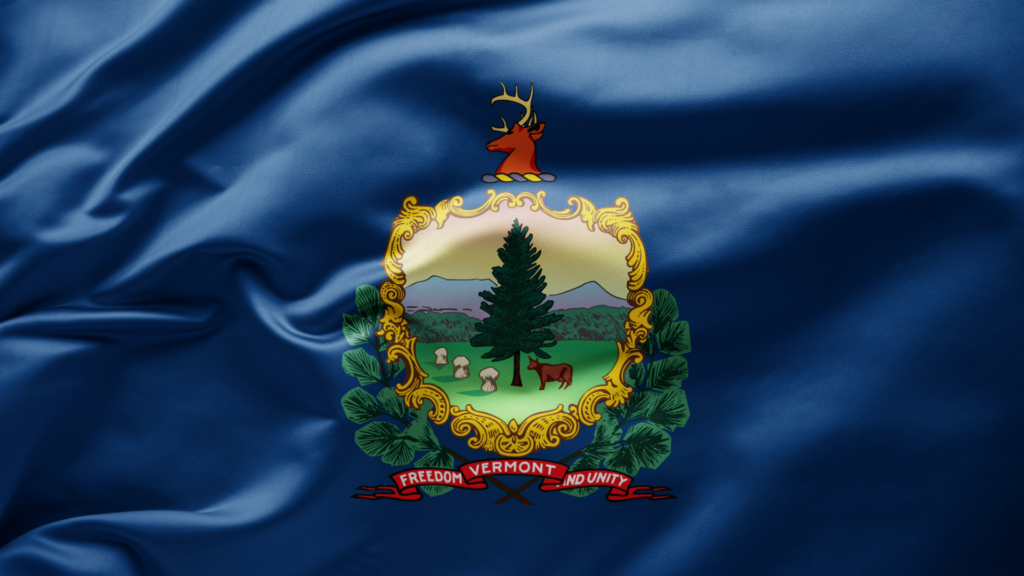
Several Vermont legislature and city documents indicate a proposal and recommendation for rainwater harvesting as a low impact development option to support stormwater management and pollution concerns.
Vermont State Rainwater Harvesting Resources
- Rethinking Water Management: From Centralized to Decentralized Water Supply and Sanitation Models, and;
- 2017 Vermont Stormwater Management Manual Rule
Virginia Rainwater Harvesting Law
Rainwater harvesting is legal, encouraged, and supported by law code, guidance documents, and incentives for practice within the State of Virginia.
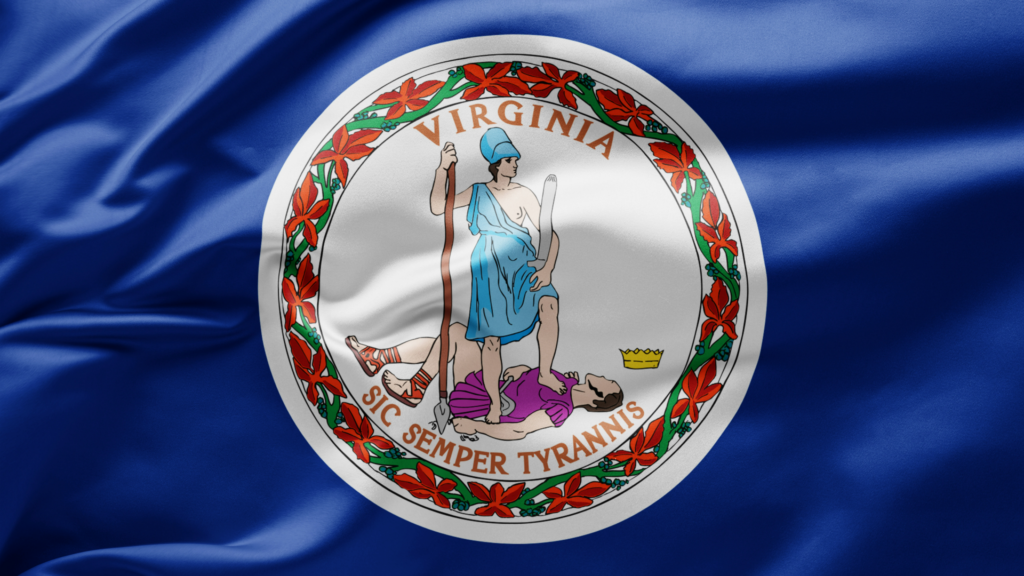
Virginia Rainwater Harvesting Credits
In Virginia, Senate Bill No. 1416 outlines the available rainwater tax credits, reimbursement amounts, and qualification requirements for residents and businesses within the State of Virginia. Virginia residents and corporations can receive a tax credit up to 50% of the total installation cost of a new rainwater harvesting system not to exceed $2,000 and $50,000, respectively for residents and corporations.
The State of Virginia defines a rainwater harvesting system as one that “[…] shall include but is not limited to roof-washing systems, storage tanks for the collection of rainwater, gutters, and gutter guards”.
Also, rainwater harvesting systems with rainwater tanks larger than 250 gallons may be eligible for reimbursement of $4.00 for every gallon of roof runoff collected by the system up to a maximum of $20,000.
VA Rainwater Harvesting Codes
The Code of Virginia in Section 32.1-248.2, the use of rainwater and reuse of gray water; regulations, discusses the proposal of regulations for rainwater harvesting, considers promoting the use of rainwater harvesting, and considers recognizing rainwater as an independent source of fresh water for public and private use.
Virginia Administrative Code 9VAC25-870-65 for water quality compliance lists rainwater harvesting as an approved nonproprietary BMP (Best Management Practice) for use by businesses and non-residential applications to comply with the Virginia Runoff Reduction Method and aid in reducing environmental pollution.
Virginia Administrative Code 13VAC5-63-320 chapter 29 plumbing systems covers the standards for the design and installation of plumbing systems and equipment, which includes rainwater harvesting.
Virginia Department of Health RWH Guidance
The Virginia Department of Health has compiled and published a guidance document titled “Virginia Rainwater Harvesting & Use Guidelines” as an informative guide built from current Virginia regulations on harvesting rainwater for Virginia residents.
Washington Rainwater Harvesting Law
The practice of rainwater harvesting is legal, encouraged, and supported in the State of Washington for outdoor and indoor non-potable and potable uses. In most cases, a water rights permit will not be needed for collecting rainwater in Washington State. However, other building permits may be required and will depend on the county district and the specifics of the system being installed.
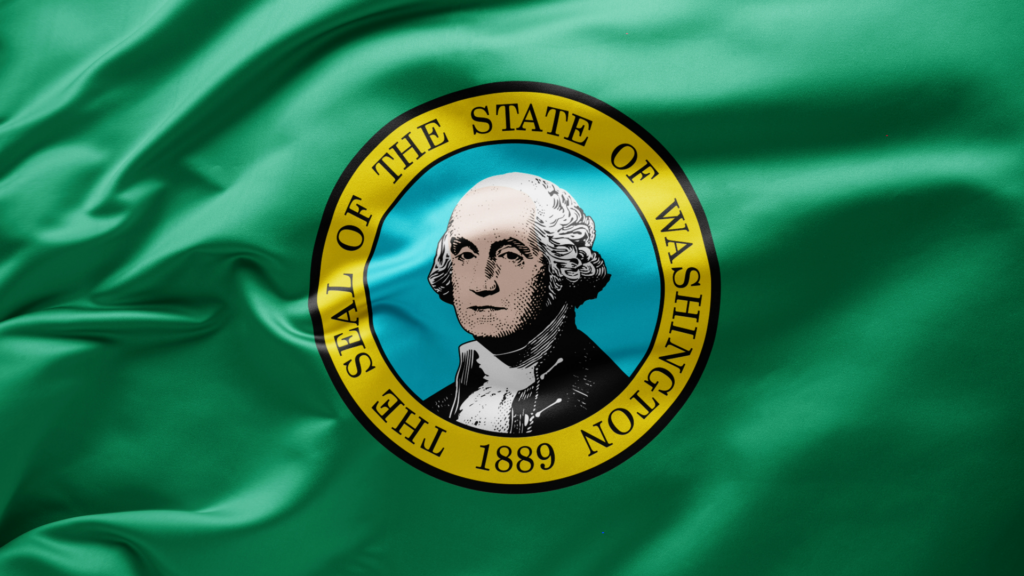
Washington Rainwater Harvesting Policies
Washington State law allows rainwater systems to be used to supply drinking quality water. However, individual counties in Washington may prohibit the practice. Individuals wanting to use rainwater for drinking water and indoor applications in the State of Washington should check with their local county jurisdiction for approval.
In the state, Washington State Policy 1017 for water resources indicates a water rights permit is not required for the on-site storage and use of collected rainwater. The State of Washington Department of Ecology says a water rights permit will not be required for rainwater harvesting as long as the following conditions are met:
- Collected rainwater must be used on the same property where it’s collected; i.e. on-site.
- Rainwater can only be collected from existing structures, where rainwater harvesting is the structure’s secondary purpose.
- Collecting rainwater shall not negatively affect any existing water rights, (which the department says is unlikely).
- If the rainwater system will be used for the primary source of drinking water, the individual should work alongside the local county for permission and/or requirements.
Washington State Permits for Rainwater Systems
In the State of Washington, a water rights permit is not to be confused with other building permits, which may be required for the installation and use of a rainwater harvesting system.
Regulations indicate that no permits may be needed for rainwater harvesting systems that will be entirely exterior to a structure, that have a maximum container storage volume of 360 gallons, and that will be used for non-commercial, personal irrigation of outdoor gardens and lawns such as in drip and sub-surface irrigation, meaning no water pump or electrical wiring will be needed.
Any rain collection system that will distribute water to a structure’s interior and fixtures for use, that features electrical connections such as for water pumps, requires underground burial of a container and/or foundational construction for support will, in most cases, require a permit.
In Washington State, permit types that may be required for designing, installing, and using a rainwater harvesting system include a plumbing permit, electrical permit, building permit, grading permit, and/or a critical area permit.
Additional Washington State Rainwater Harvesting Resources
- Rainwater Harvesting for Beneficial Use | Seattle Department of Construction and Inspections
- Be RainWise: Information and Rebates on Rain Barrels and Cisterns | King County
- Washington State Green Infrastructure Resources | King County Stewardship Partners
- Rain Barrels and Tanks | Pierce County Conservation District
West Virginia Rainwater Harvesting Law
Rainwater harvesting practice is legal, encouraged, and supported in West Virginia for both indoor and outdoor non-potable applications at both residential and non-residential properties.
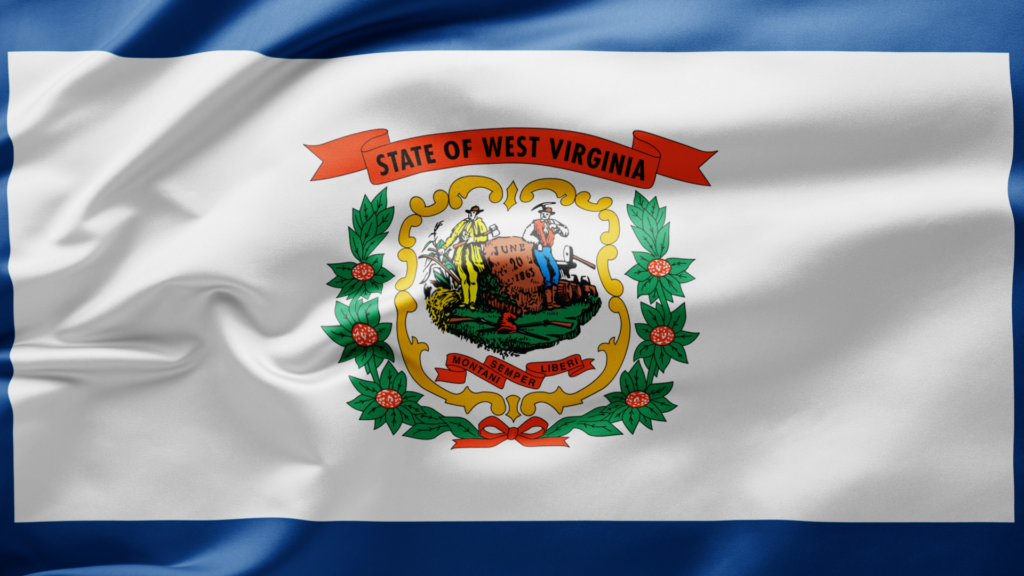
The West Virginia Conservation Agency recommends the practice of rainwater harvesting to contractors, builders, land and property owners as a best management practice to limit, control, and improve stormwater discharge.
The State of West Virginia Department of Environmental Protection provides a Rainwater Harvesting Manual to assist property owners, businesses, and contractors alike in the understanding, design, and implementation of rainwater harvesting systems.
The WV DEP also has a Rain Barrel and Stormwater Education program as part of their Division of Water and Waste Management with some frequently asked questions and information about their rain barrels for nonprofits and educational institutions.
Wisconsin Rainwater Harvesting Law
The practice of rainwater harvesting is legal in the State of Wisconsin for indoor and outdoor, potable and non-potable uses. Depending on the city and county in Wisconsin, there may be regulations to follow regarding the design, setup, and placement of a rainwater harvesting system and associated equipment and plumbing, even when used exclusively for outdoor applications.
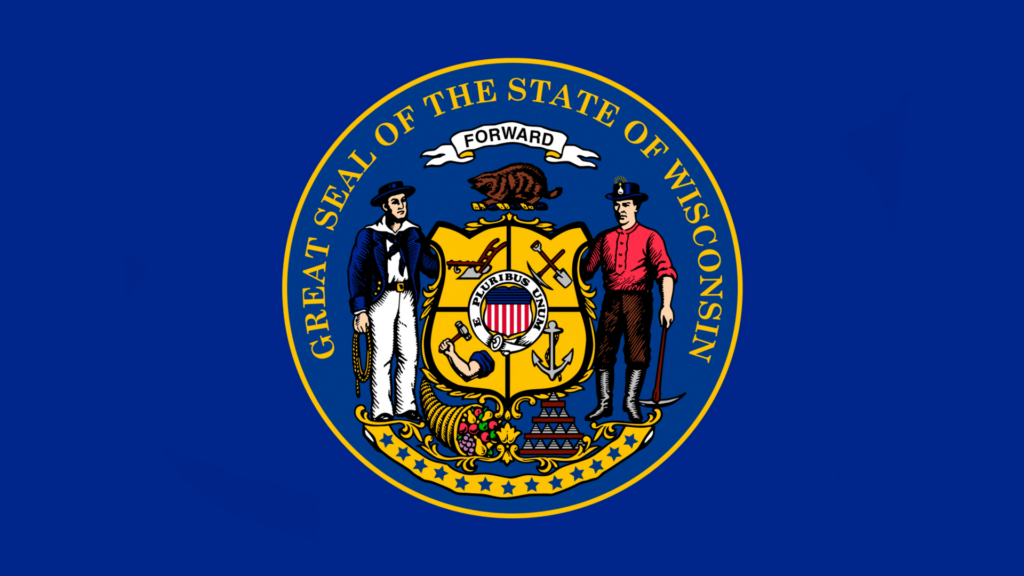
Wisconsin Rainwater Harvesting Guidelines and Expectations
The City of Milwaukee, WI provides a Rainwater Collection Guidelines for Residents and Property Owners. The guide outlines much in the way of rainwater harvesting in Milwaukee, including steps and considerations for adhering to Wisconsin Administrative Code Section 382.
Rainwater harvesting systems that will even only be used for outdoor, non-potable applications are still expected to meet certain requirements for filtration and treatment. Wisconsin separates intended rainwater uses into different classifications depending on how the water will be used and these different classifications will require different levels of treatment to be acceptable.
Harvesting Rainwater for Non-Potable Uses in Wisconsin
The different non-potable rainwater use classifications are (1) subsurface infiltration and irrigation; (2) surface or spray irrigation; (3) surface irrigation, vehicle washing, clothes washing, air conditioning, soil compaction, dust control, washing aggregate and making concrete, and; (4) toilet and urinal flushing.
All of the above use cases require treatment to a set standard and will require a pre-filter, filter, pH control, and/or adding chlorine. The amount, type, and specific equipment will vary on the select use case with more treatment being required as classifications increase in number from 1 to 4.
Using classified non-potable water for food crops is not approved in Wisconsin.
Wisconsin Rainwater System Standards and Permits
In the State of Wisconsin, the Department of Safety and Professional Services requires any water connected to indoor plumbing to follow the plumbing treatment standards found on Table 382.70-1 of the state plumbing code.
The City of Milwaukee, WI also provides an Introduction to Commercial Rainwater Harvesting, which outlines when a permit or plan review by the city may be required for a rainwater harvesting system.
Permits are required if:
- There is an underground collection tank
- The system is directly connected to the public water supply
- The system supplies water inside the building
- The water is used for potable applications
Plan review may be required if:
- There is over 1,000 square feet of roof area to grade or connect to the storm sewer
- There is rain barrel overflow to grade or storm sewer conveyance
Although the above is for the City of Milwaukee, it is safe to assume the same or similar requirements for rainwater harvesting in other cities and counties in Wisconsin due to the Wisconsin State Administrative Code.
Wyoming Rainwater Harvesting Law
Rainwater harvesting for non-potable, outdoor applications is legal to practice in the State of Wyoming. Other details and information are difficult to determine at the time of this writing. For potable applications, we recommend contacting your local government or the Wyoming Department of Environmental Quality.
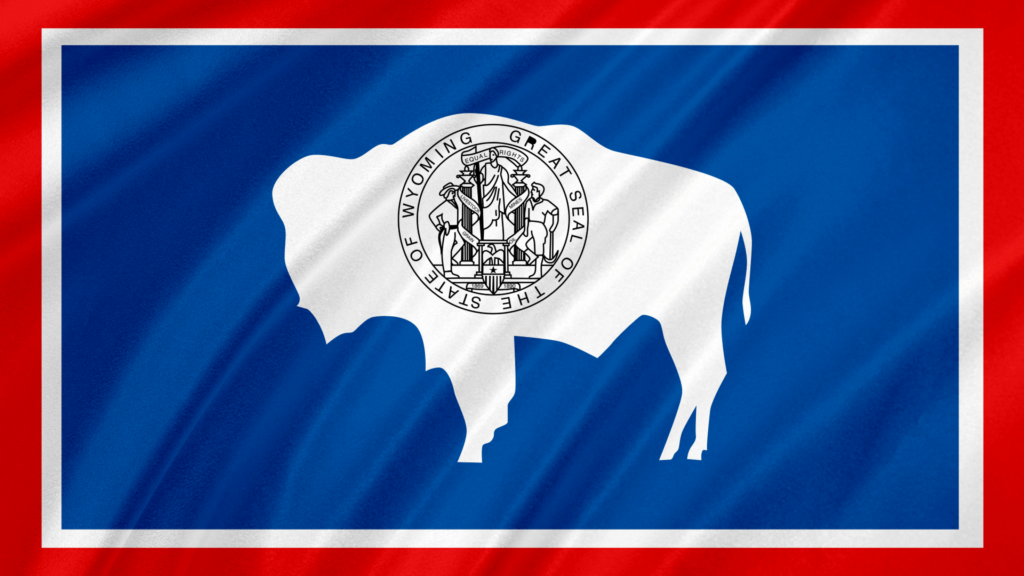
The National Tank Outlet, Your Source for Rainwater Harvesting Tanks
The National Tank outlet is an industry-leading source on rainwater harvesting information and equipment. With one of the largest selections of rainwater harvesting tanks available for sale online, we have the container type, size, and material your project needs. Rainwater harvesting tanks are available in high density polyethylene, galvanized steel, stainless steel, fiberglass, and corrugated galvanized steel for rainwater storage up to 100,000 gallons. Both aboveground and underground rain tanks are available. Underground rainwater cisterns storage ranges up to 20,000 gallons to meet the needs of agriculture and non-residential applications.
Whatever your project or personal needs, the National Tank Outlet is here to deliver, with our low price guarantee and nationwide shipping. Contact us today for more information or assistance.
